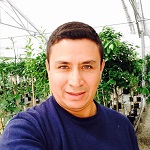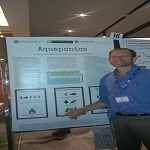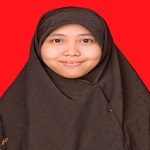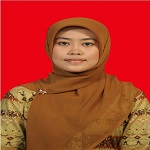Day 1 :
- Agriculture Engineering | Agriculture & Food Security| Plant Science | Agricultural Production Systems & Agribusiness | Bioresources | Agricultural Biotechnology | Agriculture and Environment | Agroforestry & Landscaping | Livestock Farming & Genetic Engineering
Location:
Session Introduction
Diego M. Viteri
University of Puerto Rico-Mayagüez, USA.
Title: Selecting grain legume genotypes with resistance to ashy stem blight by the cut-stem method
Time : 09:30-10:10

Biography:
Diego M Viteri is an Assistant Professor in the Department of Agro-Environmental Sciences at University of Puerto Rico. He has more than five years of experience in genetics and breeding for resistance to biotic and abiotic stresses in common bean. Also, he has experience in the development of screening methods to identify crop genotypes with resistance or tolerance to diseases in the greenhouse. He is the author/co-author of more than 20 publications in North American and European journals.
Abstract:
Ashy stem blight (ASB) caused by Macrophomina phaseolina (Tassi) Goidanich (Mp) is an important disease in legumes in the tropics. Resistance has been identified within Cajanus, Phaseolus and Vigna species. Our objectives were to: Evaluate the response of the legumes germplasm conserved at University of Puerto Rico and identify resistant genotypes. 20 common beans were planted in a greenhouse at Isabela; 3 cowpeas, 4 common beans and 42 pigeon peas were planted at Lajas in 2016-2017. PRI16 Mp isolate was inoculated 1 or 3 times at the fourth-internode and lateral branches by the cut-stem method. Evaluation of ASB severity was conducted at 15 and 42 days in Lajas and Isabela, respectively. BAT 477, Othello and Verano common beans were susceptible (mean scores >7) in both locations. I-58-2, ICP 86012, and ICP 98030 pigeon peas were susceptible in Lajas. Partial resistance (scores 4-6) was noted in pigeon pea genotypes: Cortada, Guerrero, ICP 6899 and Pinto Berrocales and Gorda cowpea in Lajas. Similarly, A 195 and Badillo common beans were intermediate in Isabela while PC 50 had partial resistance in both locations. I-8-3-4 and ICP 6915 pigeon peas; PI 339623 (Tanzania) and PI 293570 (Speckled Purplehull) cowpeas were resistant to ASB in Lajas (scores£3). Thus, the cut-stem method was a reliable technique to select genotypes with ASB resistance and should be used in combination with field evaluations. Furthermore, multiple inoculations with the same or different Mp isolates are recommended to identify genotypes with specific and broad-spectrum resistance.
Asael Greenfeld
Curtin University, WA.
Title: Economically Viable Aquaponics: Mapping the Gap between Promising Potential and Current Uncertainties
Time : 10:30-11:00

Biography:
Asael Greenfeld has an MSc in dryland Ecology from BGU Israel and Enviromental Education is Israel and Australia. He is pursuing PhD course in Environmental Economics at Curtin University WA, in conjunction with the Tel-Hai academic college in Israel.
Abstract:
Aquaponics or integrated farming of fish and plants, has potential for sustainably producing high quality food, but has not become a commercial success in most places. In recent years, aquaponics has been receiving growing attention from the scientific community and the current literature covers many aspects of aquaponics production. We reviewed the current literature and classified the specific areas covered by each paper and its contribution to cost reduction or benefit enhancement. Regardless of contradicting views of current profitability, there seems to be a consensus that: Bigger systems are economically superior to smaller ones; profitability is sensitive to retail prices; perhaps most importantly, most authors agree that commercial aquaponics can become more profitable by improving business plans. We identified three under-studied aspects that could each be a game changer for commercial aquaponics: Grower considerations such as financial planning and risk management that may affect potential growers’ initial engagement in aquaponics; Consumer perception of aquaponics products including willingness to pay more for the added value; The economic value of environmental benefits of aquaponic systems and ways to internalise them. We present some results from our study on growers’ and consumers’ perception of aquaponics that highlight the importance of case specific business planning and market research. Further study of each of these three aspects will support ongoing attempts to establish large-scale aquaponics as an economically sustainable practice.
Khorramdelazad Mahsa
Griffith University, Australia.
Title: Characterisation of R-QTL for Ascochyta lentis resistance in lentil and identification of candidate defence-transcripts
Time : 11:00-11:30

Biography:
Mahsa is a doctoral student at Griffith University. Her PhD project is on “Identification of genes and molecular defence mechanisms of lentil (Lens culinaris) to Aschochyta lentis a necrotrophic fungus” in Professor Rebecca Ford’s research group. She has been doing various genomics, molecular and plant pathology related studies for the last 10 years. She has lots of experiences on DNA and RNA extraction, PCR and RT-qPCR, gel electrophoresis both on agarose and polyacrylamide gels, RNA and DNA sequencing, Molecular markers, planting and subculturing, disease severity scoring and running large experiments and bioassays. She is currently tutoring in Biological Systems labs at Griffith University along with running the very last PhD related experiments.
Abstract:
Lentil (Lens culinaris) is a valuable staple food legume with an annual global production of ~5MT which is ubiquitously impacted by the disease ascochyta blight, caused by the necrotrophic fungal pathogen, Ascochyta lentis. The most effective and environmentally friendly method to control AB is use of resistant genotypes together with scheduled chemical applications. In order to breed sustainable resistance, knowledge on the key components underpinning the resistance trait is required. Accordingly, a large number of A. lentis defence-related transcripts were identified by RNA-sequencing in the highly resistant genotype ILL7537, which is routinely used in the Australian resistance breeding program [1]. Subsequently, genome-by-sequencing (GBS) method was used to identify SNP markers and produce a comprehensive linkage map comprising of 1161 markers across 120 F5 RIL (ILL7537 x ILL6002 cross). Disease resistance in the RIL population was assessed using four quantitative traits and three major quantitative trait loci governing the ILL7537 resistance were identified (R-QTL). Co-location of differentially expressed defence-related transcripts with SNPs within the identified R-QTL regions revealed a set of putative candidate resistance genes and associated transcription factors, for further investigation as the key drivers of the resistance trait.
Zaheer Ahmad Nazar
University of the Punjab, Pakistan
Title: Yield potential of promising sugarcane lines/varieties in response to whip smut
Time : 11:30-12:00

Biography:
Zaheer Ahmad Nazar is a PhD Scholar at University of the Punjab, Lahore, Pakistan. He is working on PhD research topic- “Genetic diversity studies for whip smut tolerance in sugarcane germplasm”. He has three research publications.
Abstract:
Determining yield potential of sugarcane lines in terms of their cane weight, height, girth and sugar recovery is essential for their selection in future breeding programs. The performance of 103 promising sugarcane lines/varieties was checked over two successive cropping years under high inoculum conditions for whip smut. During first year of cultivation, 84 sugarcane lines were found highly resistant with only five being susceptible to whip smut. However, 80 sugarcane lines were found highly resistant to whip smut in the ratoon crop. Principal component biplot analysis revealed over all best performance of S.2008-FSD-17, S.2003-US-127, S.2008-US-704 and S.2008-FSD-19 against all the yield traits during both years of plantation while S.2003-US-618 and SPSG-27 showed least performance. Maximum sugar recovery (13%) was recorded in S.2003-US-127, cane weight in S.2011-SL-209 (16.65%), cane height in S. 2008-AUS-190 (3.5 m) and cane girth in SPSG-24 (3.6 cm) while S.2003-US-618 was found highly affected by the whip smut with 74% disease incidence rate among all the studies sugarcane lines/varieties. Further statistical analysis revealed higher estimations of broad sense heritability and genetic advance for the yield traits i.e., cane weight and sugar recovery, which indicated rich potential of using these traits for the development of hybrid and synthetic varieties. These traits were also found more genetically controlled with little to moderate environmental impacts. Moreover, the LSD based ranking of all the sugarcane lines/varieties for their performance against yield traits and smut resistance may help cane breeders in revealing true potential of these sugarcane lines.
Kiflom Weldu Okubazghi
Institute of Cotton Research of Chinese Academy of Agricultural Sciences, China.
Title: Genome-wide association mapping for malondialdehyde and proline contents in semi-wild accessions of Gossypium hirsutum races under drought stress

Biography:
Kiflom Weldu Okubazghi has completed his MSc in Crop Genetics and Breeding from Graduate School of Chinese Academy of Agricultural Sciences. Currently, he is a PhD Scholar at Graduate School of Chinese Academy of Agricultural Sciences. He is also a Lecturer at Hamelmalo Agricultural College, Keren, Eritrea. He has published a paper in a reputed journal named Journal of Integrative Agriculture and his other papers are ready for submission to other reputed journals.
Abstract:
Gossypium hirsutum is the most important source of fiber for textile industry worldwide. To meet the demand of the world’s growing population and rising income, cotton production must be improved. However, crop production, in general, is under threat due to human-mediated climate change, which has left farmers and crop breeders with almost no choice but to contend with frequent and long-term droughts, among other abiotic stress. Semi-wild accessions of Gossypium hirsutum races are repositories of desirable alleles for several economically important traits, such as tolerance to drought stress. Thus, uncovering the molecular basis of drought related traits in the accessions may play a key role in developing new drought tolerant cotton varieties. In this study, to detect single nucleotide polymorphisms (SNPs) significantly associated with drought tolerance related physiological responses, genome-wide association study (GWAS) was conducted in 189 semi-wild accessions of Gossypium hirsutum races using 80K Illumina Infinium SNP array. We performed GWAS using mixed linear model implemented in TASSEL 5 software and detected 1 and 2 SNPs significantly associated with malondialdehyde and proline, respectively on 2 of the 26 cotton chromosomes, explaining 9.80-11.61% of the total phenotypic variation. In addition, we identified 7 and 59 candidate genes related to malondialdehyde and proline, respectively. The identified SNPs and genes not only further advance our understanding of the genetic architecture of drought tolerance but also could be utilized in future drought tolerance improvement programs though marker assisted selection in cotton.
Umi Pudji Astuti
Institute of Agriculture Technology, Indonesia.
Title: Effectiveness of disemination methods and factors that influence farmer adoption to citrus gerga lebong technology in bengkulu indonesia
Time : 12:00-12:30

Biography:
Umi Pudji Astuti is a extention worker in Indonesian Agency for Agricultural Research and Development (IAARD) Ministry of Agriculture. The Activities responsible 2 years a go are leed of activity : 1) Efectiveness Disemination methode supported agribisnis of citrus Bengkulu Province; 2) Disemination of result and assesment specific location Bengkulu; 3) Assesment of the Model Bioindustri Farming Sistem based on Specific Location of Crop – Live Stock Integration Bengkulu Province;. Her Current duty are: a member of The Improvement Extension Capacity in the Accerelaration of Agriculture in Innovation Development in DIY Province; a member of field assessment Rice in DIY Province.
Abstract:
The effectiveness of agricultural extension is determined by components in agricultural extension system among others are agricultural extension methods. Effective methods should be selected and defined based on the characteristics of target, resources, materials, and objectives to be achieved. Citrus agribusiness development in Lebong is certainly supported by the role of stakeholders and citrus farmers, as well as the proper dissemination of methods. Adoption process in extension substantially can be interpreted as changes of behavior process such as: knowledge (cognitive), attitudes (affective), and skill (psycho-motoric) in a person after receiving "innovation" from extension submitted by target communities. The output of this study: 1) to analyze the effectiveness of field trial methods in improving cognitive and affective farmers; 2) Knowing the relationship of adoption level and knowledge of farmers; 3) to analyze the factors that influence farmers' adoption. Method of this study are field day and survey to 40 respondents in Rimbo Pengadang Sub District, Lebong District in 2014. Analyzed data was done by descriptive and statistical parametric (multiple linear functions). The results showed that: 1) Field trip method is effective to improve the farmer knowledge (23,17% ) and positively affect the farmer attitude; 2) the knowledge level of PTKJS innovation farmers "positively and very closely related".; 3) the factors that influence the level of farmers' adoption are internal factors (education, knowledge, and the intensity of training), and external factors respondents (distance from the house to the garden and from the house to production facilities shop).
Gurpreet Kaur
Department of Biotechnology, India.
Title: In silico approaches for structure and function analysis of calcium-dependent protein kinases (CDPKs) in potato (Solanum tuberosum L.)
Time : 12:30-13:00

Biography:
Gurpreet Kaur is a Research Scholar at Thapar Institute of Engineering and Technology and working in plant molecular biology.
Abstract:
Various stimuli are known to alter the cytosolic concentration of Ca2+, which in turn trigger the physiological responses in plant and animal cells. Such Ca2+-mediated signals are decoded in the form of spatio-temporal expression of different calcium-binding proteins. Calcium-dependent protein kinases (CDPKs) are regarded as one of the largest and most differentiated groups of calcium sensors. The regulatory domains of these proteins bind calcium ions. Activities of the CDPKs are regulated by specific phospholipids and autophosphorylation. CDPK-mediated phosphorylation reactions are known to influence various metabolic activities such as carbon and nitrogen metabolism, phospholipid synthesis, defense responses, ion and water transport, organization of cytoskeletons along with transcription, hormonal responses and intra-cellular signaling. Potato (Solanum tuberosum L.), a member of the Solanaceae family, is a nutritious and non-grain starchy food crop. It is a C3 plant and grows well in short-day and cool night temperature. Multiple allelism is a common feature in the tetraploid potato cultivars. The tubers are the sink organs for storage of starch, proteins and other biomolecules. Tuberization is a complex process that involves number of signals, genes, extrinsic and intrinsic factors and developmentally-regulated metabolic processes. Protein phosphorylation is known to play crucial roles at various stages of tuber development. Several studies revealed the presence of different forms of CDPKs showing varying expression patterns and functional specializations. For example, StCDPK1 is transiently induced upon tuberization in swelling stolons. Likewise, StCDPK3 is involved in tuberization. StCDPK2 is expressed only in leaves; whereas StCDPK4 and StCDPK5 are involved in immune responses. The CDPKs act as mediators of responses to diverse endogenous and environmental cues. The biological function of the individual CDPKs still remain elusive. In this study in silico approaches were adopted for predicting various structural and functional attributes of various potato CDPKs which were hitherto unknown.
Rashmi Rekha Boruah
Assam Agricultural University, India.
Title: Optimization of surface sterilization protocol and induction of axillary shoots regeneration in Datura metel L.
Time : 14:00-14:30

Biography:
Rashmi Rekha Boruah has completed her PhD in Department of Agricultural Biotechnology at Assam Agricultural University, Jorhat, Assam, India in 2017. During her PhD, she was accepted as a Visiting Scientist at CSIRO, Canberra, where she conducted research on transgenic chickpea for insect resistance from 2014-2016. She returned to India and conducted research on endophytes with potential acaricidal properties from Datura and Argemone in the DBT-AAU Centre, Assam Agricultural University. She has also published papers in the Indian Journal of Genetics and Plant Breeding for her research on transgenic chickpeas resistant to the pod borer, Helicoverpa armigera.
Abstract:
Micropropagation is an efficient tool for mass propagation of true to type plants. The medicinal values of field grown plants are often affected by biotic and abiotic stresses unlike in vitro regenerated plants. It is important to optimize the conditions for in vitro regeneration in order to avoid microbial contamination and promote the availability of micro propagated plantlets. The objective of this work was to establish an optimized protocol for micropropagation of Datura metel L. Shoot tips from field grown plants were used as explants. Explants were surface sterilized using 1% sodium hypochlorite, 0.1% fungicide (Carbendazim) and 70% ethanol for different exposure timings (1 to 15 minutes). With an increase in exposure time of sodium hypochlorite, contamination of explants declined but blackening of tissues was observed. Among the tested sterilization steps, treatment of explants with 70% ethanol for 1 minute, 0.1% fungicide for 3 minutes and 1% sodium hypochlorite for 10 minutes showed the best result with minimum tissue death. Shoot proliferation was investigated on Murashige and Skoog (MS) basal medium supplemented with different concentrations of 6-Benzylaminopurine (BAP) either alone or in combination with kinetin. Highest multiplication rate was observed on MS medium supplemented with BAP (0.5 mg L-1) and kinetin (0.5 mg L-1).
Jaehwan Roh
Cheonbuk National University, South Korea.
Title: Evaluation of Durable Blast Resistance of Korean Rice Cultivars with Nursery Test

Biography:
He has completed his PhD in 2002 from Cheonbuk National University. He is a senior scientist of national institute of crop science(NICS), RDA, South Korea. He has published more than 20 papers in reputed journals.
Abstract:
Blast resistance of 16 rice cultivars determined to have durability against rice blast by sequential planting method was compared with nuesery test carrying out at 14 sites for 14 years in Korea.
The average disease severity (ADS) of 16 rice varieties against rice blast showed the resistance as 3.5 degree; however the difference of disease severity among the varieties was from at least 2.0 up to 4.7. ADS of 6 rice cultivars were showed high resistant reaction like as less than 3.0 degree and 10 rice cultivars were showed moderate resistance. Among the 6 rice cultivars presented low ADS, 4 rice cultivars, Gopum, Pungmi1, Sinunbong1, and Baegjinju were constantly appeared high resistant reaction for those 14 years but the other 2 rice cultivars, Ungwang and Keumo3 were showed big variation over the test years. On the other hand, 2 rice cultivars shcu as Sinunbong1 and Keumo3 were showed stable resistance response in all test sites but 4 rice cultivars including Ungwang, Gopum, Pungmi1, and Baegjinju were showed a significant different resisant reaction between the rest sites. As a result of the nuesery test conducted at 14 sites for 14 years, the rice cultivars judged to have durable resistance generally showed less than moderate resistance.
These results indicated that durable resistance test against rice blast using sequential planting is a very effective to predict durability and nursery test for long periods also useful to forecasting indirectly durable resistance of rice cultivars.
Wenyu Zhang
Institute of Agricultural Information, China.
Title: Modeling of Biomass-Based Leaf Morphological Parameters on Main Stem for Rapeseed (Brassica napus L.)
Time : 14:30-15:00

Biography:
Wenyu Zhang has completed his PhD from Nanjing Agricultural University. He has published more than 26 papers in journals and has been serving as a Member of computer application in agriculture chapter of Chinese Association of Agricultural Science Societies and The Youth Committee of Jiangsu Society of Systems Engineering.
Abstract:
To quantify the relationships between main stem leaf morphological parameters for rapeseed and the corresponding leaf biomass, field experiments on varieties, transplanting densities and fertilizer were conducted in 2011 to 2012 and 2012 to 2013 seasons. The biomass-based leaf morphological parameter models for rapeseed on main stem were constructed through observing leaf length, maximum leaf width and leaf petiole length under various treatments and analyzing the relationships between leaf morphological parameters and the corresponding leaf biomass. Because both of the leaf length and leaf width were positively proportional to the square root of the corresponding leaf biomass, meanwhile the leaf petiole length was positively proportional to the corresponding leaf length, thus, the changes in the leaf length, the maximum leaf width and the leaf petiole length with the square root of the corresponding leaf biomass for different treatments could be described with linear function. The biomass-based leaf morphological parameter models were validated using independent experiment data and the results showed that the model revealed satisfactory predictions of leaf length, leaf width and leaf petiole length, except the simulation for leaf petiole length of Ningyou 16. The research provides a mechanistic method for linking the rapeseed growth model with the morphological model using organ biomass and lays a foundation for the establishment of functional-structural plant models of rapeseed.
Andy Bhermana
Assessment Institute for Agricultural Technology (AIAT), Indonesia.
Title: The combination of land resource evaluation approach and gis application to determine prime commodities for agricultural land use planning at developed area (a case study of central kalimantan province, indonesia).
Time : 15:00-15:30

Biography:
Andy Bhermana has completed his PhD from Gadjah Mada University, Indonesia. He is a Researcher of AIAT of Central Kalimantan, Indonesia. He has published more than 20 papers in reputed journals both international and local journals.
Abstract:
Land use planning based on land resource evaluation and spatial orientation of planning as part of GIS may ensures appropriate land allocation in order to achieve sustainable agriculture. The combination of some land resource evaluation can provide final results on rational land allocation and land utilization based on land capability and suitability. Land capability evaluation (LCE) and land suitability evaluation (LSE) approach rooted from USDA and FAO was used in this study to allocated arable land as agricultural developed areas and determine prime commodities spatially. The principle of limiting condition was used for LCE to define land class and determine land availability for agriculture. While, for LSE, procedure of matching between land quality/characteristics and crop requirement will be scored according to limitation method and class criteria of land suitability in order to define the most suitable crop considered as prime commodity. The objective of this study was to determine prime commodities at developed areas on the basis of information of land resources at regional scale of 250,000. With GIS application, the result of evaluation were then integrated into spatial information as basic consideration for agricultural land use planning and further spatial analysis for agricultural land allocation as well. This study was conducted in Central Kalimantan province with total areas of 15,451,287 hectares in order to support policy of Indonesian Government for agricultural development especially for spatial agricultural land use planning. The results of this studies showed that based on LCE approach, almost 61.94% of total areas (9,571,231 hectares) is arable land indicating that lands geographicaly have an opportunity to be developed. While based on LSE approach and GIS application, there are three prime commodities including their geographical distribution pattern that are suitable to be developed in Central Kalimantan involving wetland rubber (7,355,390 hectares), rice (2,141,539 hectares) and oil palm (1,722,806 hectares). Appropriate programs in the scope of land, using planning can then be formulated to support agricultural development at certain areas.
Endro Gunawan
Indonesian Agency for Agricultural Research and Development, Indonesia
Title: Analysis performance of the warehouse receipt system (WRS) to support agricultural marketing in Indonesia
Time : 15:30-16:00

Biography:
Endro Gunawan has expertise in agricultural economic and public policy. He is evaluating the model of agricultural bio industry where the farming system has zero waste and environmental friendly. He is pursuing his PhD at Asian Institute of Technology (AIT) Thailand major on agribusiness management. He conducts research on agricultural supply chain and the assessment of warehouse receipt system for agricultural commodities in Indonesia.
Abstract:
The common characteristics of agricultural commodities are perishability, seasonality and variability. Agricultural commodity prices fluctuate where during harvest time the price is low. To get a high selling price, farmers can make a "selling delay" by deposit the commodity in the warehouse and re-selling at high prices. By deposit, the goods in the warehouse farmers get a warehouse receipt that can be used as collateral to obtain financing to meet the daily needs as well as for the needs of venture capital. Warehouse Receipt System (WRS) have been implemented in Indonesia in 2008 based on Law No. 9 of 2006 on Warehouse Receipt System. There are ten commodities that can be stored in the WRS warehouse: paddy rice, rice, corn, coffee, cocoa, pepper, seaweed, rattan, rubber, and salt. The implementation of WRS is slow and not widely accepted. The objective of this research are : 1) to analysis the concept of Warehouse Receipt System in Indonesia, and 2) to assess the performance of WRS to support marketing system of corn commodities. The research was conducted in 2015 in Tasikmalaya District, West Java Province. Primary data were collected through direct interviews using structured questionnaires to farmers, trader, WRS Managers and Bank. The data analysed by quantitatively and qualitatively analysis. Data analysis results are presented in the form of analytical tables which then discussed descriptively, comparing the concept and implementation of WRS. The results of the study obtained information that the WRS implemented since 2008 implementation is slow. The benefit is mostly for trader and the procedures is complicated. There are any supporting institution in the WRS such as warehouse managers, assessment agencies (LPK) and financial institutions. The performance of WRS in Tasikmalaya District, West Java Province in 2015 has been utilized by 15 users with the number of corn successfully stored in WRS Jamanis warehouse reached 386.52 tons or equivalent of corn value of Rp 1, 623 billion. The number of WRS proposed as credit collateral amounts to 12 WRS with a total realization of Rp 900 million. The cost component charged from WRS users consist of: the cost for quality test Rp 280.000 per one warehouse receipt, transportation cost Rp. 10-20/kg, drying cost Rp. 200/kg and insurance costs Rp. 0.24 per item value. With the Warehouse Receipt System farmer can expand their marketing channel.
Heni Purwaningsih
Yogyakarta Assessment Institute of Agriculture Technology, Indonesia.
Title: Japanese taro (satoimo) (colocasia esculenta var antiquorum) as germplasm indonesia and the use of opportunities to export
Time : 16:20-16:50

Biography:
Heni has completed her PhD at University of the Philippines Los Banos, College of Human Ecology and the Faculty of Human Nutrition and Food. She is Researcher at Yogyakarta Assessment Institute of Agriculture Technology. She has expert in the post-harvest technology.
Abstract:
Taro is one of the local food commodities which until now has not received attention and have the opportunity to be developed. One type of taro that became the richness of germplasm in every region in Indonesia is Taro Satoimo (Colocasia esculenta var antiquorum) better known as taro Japan including tuber crops that can be used as food. The superiority of taro Satoimo is can be cultivated on open land or under other plant stands. Based on several research results taro Satoimo able to grow shaded up to 70% shade. Production potential in sandy soil is higher (3.4kg / m2) than in the yard (2.04 kg / m2) with various tuber characteristics. Utilization of taro satoimo in Indonesia into various products such as flour with 24% yield of flour taro japan has a high enough nutritional content, with high protein content 8.85% while fat content 0.56% lower than taro in general 1.64%, starch (63, 51%), amylose 11,10%, amylopectin 52,91%, calorie 92.30 kal, carbohydrate 16.33 g, calcium 9 mg, phosphor 5 g and fiber (CF) 16.18%. Satoimo taro flour has a different white degree with taro flour in general. Diversification of processed products of taro other than flour is also used for processed cake seprti brownies steamed with 25% and 25% trigu flour substitution in accordance with consumer preference results. Besides this type of taro is also used as a juice because it contains hyalitrotic acid, a collagen-forming protein compound that is believed to slow the aging process of the skin so that the opportunity for cosmetic ingredients. Based on the potential and utilization of taro satoimo still need to be preserved as one of germplasm in Indonesia.
Yeli Sarvina
Indonesian Agency for Research and Development , Indonesia.
Title: University of Indonesia
Time : 16:50-17:20

Biography:
Yeli Sarvina graduated from Flood Risk Management Erasmus Mundus master program. Now she is working as agrohydrometeorology researcher at Indonesia Agroclimate and Hydrology Research Institute, Indonesia Agency For Research and development, Ministry of Agriculture Republik of Indonesia.
Abstract:
The alteration rain fall in Indonesia as an impact of climate variability and climate change has given huge impact to agriculture sector, not only on food crops, but also on horticulture crops. El Nino-southern Oscillation (ENSO) is an inter annual factor that influenced rainfall variability in Indonesia. The ENSO occurrences increase in its intensity and frequency. This paper aimed to identify the influenced of ENSO on rambutan (Nephelium Lappaceum L.) production in Indonesia. Rambutan is one of the most important tropical fruits in Indonesia. The data analyzed are time series production data all provinces and ENSO phase data. The data was analyzed by main island base (sumatera, Java, Bali and Nusa Tenggara, Kalimantan, Sulawesi, Papua and Maluku). The analysis reveal that annual production rambutan decreased on El-Nina years. Analysis by island also showed that productions decreased in all islands. The influenced El-Nina on production in Sumatera islands is less significant than other islands. Several research have reported that there is another factor that influenced Sumatera rainfall significantly, namely Indian Oscillation Dipole (IOD). ENSO have influenced the production of rambutan in Indonesia. Therefore efforts to understand the relation of ENSO and production should be assessed continuously.
Susan Haddock
University of Florida/Institute of Agricultural Sciences, USA.
Title: Florida-Friendly Landscapingâ„¢: A Grass-Roots Horticulture Program that Promotes Urban Environmental Stewardship

Biography:
Susan is a University of Florida Institute of Agricultural Sciences County Extension Agent III. She has served the commercial horticulture industry of Hillsborough County and southwest Florida since March 2010 by providing educational resources, programs, diagnostics and site visits in the areas of sustainable urban horticulture practices, water quality and conservation, integrated pest management, and pesticide safety. Susan’s educational background includes a B.S. in Environmental Horticulture from the University of Florida, a B.S. in Biology from Old Dominion University and a MBA from the University of California.
Abstract:
The State of Florida projects its current population of 20 million will grow to nearly 26 million over the next two decades, and will increasingly tax available water resources and increasingly pollute surface and ground waters. A recent strategic study on the state’s water resources, “Water 2070: Mapping Florida's Future - Alternative Patterns of Water Use in 2070", found that the state’s ongoing Florida-Friendly Landscaping™ (FFL) program is fundamental to reducing future water demand and protecting water quality. Methodology: The University of Florida, Institute of Food and Agricultural Sciences (UF/IFAS) administers FFL, with state and federal funding. FFL provides educational outreach to homeowners through its Florida Yards & Neighborhoods program and to commercial landscape professionals through the Green Industries Best Management Practices (GI-BMP) program. These programs promote quality landscapes through appropriate landscape design, while reducing nonpoint source pollution through reduced water, fertilizer and pesticide use. The programs educate citizens through a statewide network of Extension agents affiliated with UF/IFAS Extension. The agents coordinate a volunteer network of over 4,000 citizen Master Gardeners and work cooperatively with over 41,000 GI-BMP certified landscape professionals. Results: Florida state legislation (2009) found that FFL serves a public interest in water conservation, protection and restoration, participation by homeowner associations and local governments is essential, and deed restrictions or local ordinances may not prohibit FFL use by homeowners. During 2016, the program reached 155,750 homeowners through in-person workshops, conducted 6,051 home consultations, and certified 4,051 persons in GI-BMP. Other countries can easily replicate this program.

Biography:
Abdeen Mustafa Omer (BSc, MSc, PhD) is an Associate Researcher at Energy Research Institute (ERI). He obtained both his PhD degree in the Built Environment and Master of Philosophy degree in Renewable Energy Technologies from the University of Nottingham. He is qualified Mechanical Engineer with a proven track record within the water industry and renewable energy technologies. He has been graduated from University of El Menoufia, Egypt, BSc in Mechanical Engineering. His previous experience involved being a member of the research team at the National Council for Research/Energy Research Institute in Sudan and working director of research and development for National Water Equipment Manufacturing Co. Ltd., Sudan. He has been listed in the book WHO’S WHO in the World 2005, 2006, 2007 and 2010. He has published over 300 papers in peer-reviewed journals, 200 review articles, 14 books and 150 chapters in books.
Abstract:
The move towards a de-carbonised world, driven partly by climate science and partly by the business opportunities it offers, will need the promotion of environmentally friendly alternatives, if an acceptable stabilisation level of atmospheric carbon dioxide is to be achieved. This requires the harnessing and use of natural resources that produce no air pollution or greenhouse gases and provides comfortable coexistence of human, livestock, and plants. This study reviews the energy-using technologies based on natural resources, which are available to and applicable in the farming industry. Among these are greenhouses, which are necessary for the growth of some plants (i.e., vegetables, flowers, etc.) in severe climates. However, greenhouses require some air conditioning process to control their temperature and relative humidity to suit specific plants. To achieve this, a novel air humidifier and/or dehumidifier systems using mop fans had been designed and employed in an experimental greenhouse to evaluate its performance under a controlled environment. This device helped to reduce the energy consumption of the greenhouse whilst providing a pleasant environment for the plants inside the greenhouse. The system was designed taking into account the meteorological conditions, which affect the environment inside the greenhouse. The performance of the system was monitored over a period of time by measuring the temperature and relative humidity of the greenhouse. Results of the monitoring have shown that the system was able to provide comfortable conditions (temperatures of 16-26oC and relative humidity of 65%) suitable for the plants grown in the experimental greenhouse. It also enabled the minimisation of temperature variation and, hence, avoided the hazard of any sudden climatic change inside the greenhouse.
Muhammad Salman Hameed
Fujian Agriculture and Forestry University, China.
Title: Molecular Characterization and the Function of Argonaute3 in RNAi Pathway of Plutella xylostella

Biography:
Muhammad Salman Hameed has completed his Ph. D at the age of 31 years from Fujian Agriculture and Forestry University, Fuzhou 350002, China. He has submitted his Ph. D thesis in March, 2018. His Ph. D dissertation title is; Role of Argonaute2 and Argonaute3 in RNA interference pathway of Plutella xylsotella. He has published two papers during his Ph.D period and others more than 5 papers in reputed journals.
Abstract:
Argonaute (Ago) protein family plays a key role in the RNA interference (RNAi) process in different insects including Lepidopteran. However, the role of Ago proteins in the RNAi pathway of Plutella xylostella is still unknown. We cloned an Argonaute3 gene in P. xylostella (PxAgo3) with the complete coding sequence of 2832 bp. The encoded protein had 935 amino acids with an expected molecular weight of 108.9 kDa and an isoelectric point of 9.29. It contained a PAZ (PIWI/Argonaute/Zwile) domain and PIWI (P-element-induced wimpy testes) domain. PxAgo3 was classified into the Piwi subfamily of Ago proteins with a high similarity of 93.0% with Bombyx mori Ago3 (BmAgo3). The suppression of PxAgo3 by dsPxAgo3 was observed 3 h after treatment and was maintained until 24 h. Knockdown of PxAgo3 decreased the suppression level of PxActin by dsPxActin in P. xylostella cells, while overexpression of PxAgo3 increased the RNAi efficiency. Our results suggest that PxAgo3 play a key role in the double stranded RNA (dsRNA)-regulated RNAi pathway in P. xylostella.
P. Mormile
Institute of Applied Sciences and Intelligent Systems, Italy
Title: Real-time Plants response to UV-B irradiation by active Thermography

Biography:
Abstract:
The effects that different doses of UV-B radiation can induce on plants have been analyzed in a great number of papers present in the literature but many aspects of the response mechanisms remain to be elucidated. In the present work, to the best of our knowledge, for the first time the UV-B – plants interaction is analyzed by the use of active thermography, monitoring in real time the absorption process and the behaviour of the leaves irradiated by such a radiation. The study highlights new aspects of the physiological response of the plants to UV-B radiation and it opens new opportunites for the use of the thermography technique as a new and important tool for real-time analysis of the behaviour of plants under UV-B radiation.
Adriano Stephan Nascente
Embrapa Arroz e Feijão, Brazil.
Title: Nitrate reductase, micronutrients and upland rice development as influenced by soil pH and nitrogen sources

Biography:
A. S. Nascente has completed his PhD at the age of 42 years from Sao Paulo State University with a period in the University of Florida. He is researcher scientist from the Brazilian Agriculture Research Corporation at the Rice and Beans Research Center. He has published more than 100 papers in reputed journals and has been serving as an editorial board member of three journals.
Abstract:
The average of upland rice under no-tillage system (NTS), a sustainable soil management, is lower than in conventional tillage (one plowing and two disking). One of the reasons given for this drop in crop grain yield would be the low nitrate assimilation capacity of rice seedlings, due to the low activity of the nitrate reductase (NR) enzyme in the early development phase. A greenhouse experiment was conducted, in order to evaluate the effects of the soil acidic and nitrogen source in the micronutrients concentration, NR activity and grain yield of upland rice growing under NTS. The soil used in the experiment was an Oxisol. The experimental design was completely randomized in a factorial 3 x 4. Treatments consisted of three levels of soil acidity (high, medium, and low) combined with four nitrogen sources (nitrate, ammonium, ammonium + nitrification inhibitor, and control – without N fertilization). The reduction of soil acidity reduced the concentration of zinc and manganese in rice plants. Generally, the activity of the NR enzyme was higher in plants grown in soils with low acidity and fertilized with calcium nitrate. There was a greater response in growth and yield in rice plants grown in soils with high acidity. Under medium acidity, rice plants grown with ammonium sulfate were more productive, (no differences were detected with the addition of the nitrification inhibitor).
Thayaruban.T
Department of Botany, Eastern University, Sri Lanka.
Title: Using Traditional faiths & knowledge are secret of Science & Technology by Tamil community of Batticaloa, Sri Lanka.

Biography:
Abstract:
Sri Lanka has been enriched with Traditional Knowledge (TK) on Medicines and Agriculture. After the arrival of western culture, traditional faiths & knowledge are gradually started eroding, because of which farmers now face lots of problems such as difficulty in accessing agriculture, unbearably high treatment costs etc. This paper is going to be remember and document our Inheritance patterns using in agriculture & food safety at Batticaloa, Sri Lanka. It is a qualitative research based on secondary data analysis. Primarily, it is intended to document the faiths & knowledge because existing researches of the country does not provide adequate protection for TK. While this study does not trial the efficacy of these methods, it provides an indication of what methods are being used and therefore a starting point for further researches in Sri Lanka. The findings were classified into Spiritual Faith & Traditional Knowledge included traditional compost, pest control & food preservation methods which are used in Batticaloa, Sri Lanka.
Martin
Isabela State University, Philippines.
Title: Soil characterization and land suitability evaluation of major soils towards food sufficiency in Cagayan valley, Philippines.

Biography:
Martin is one among our active faculty members who dedicated significant of his time in conducting research, development and extension activities along Soil Science, Organic Agriculture, Environmental Management and Climate Change. With strong academic background having obtained the Academic Achievement Award- one of the highest academic awards given by the University of the Philippines, he finished strong as a SEARCA Scholar and recently a Fulbright Scholar for his Post Doctorate Research in Purdue University, Indiana, USA. His research on the influence of tillage and nitrogen fertilizer management on corn productivity and soil carbon, and impact of cover crops on greenhouse gas emissions and microbial activities on agricultural soils promote the implementation of Good Agricultural Practices (GAPS) in minimizing GHG emissions in the soil and help in curbing down the impact of climate change.
Abstract:
Scientific land evaluations are important to properly identify an appropriate land use. Suitability analysis allows identification of the main limiting factors for the agricultural production and enables decision makers to develop crop management technologies able to increase productivity of the land. This study aimed to develop a GIS-based approach for land use suitability assessment which will assist farmers and land use planners to identify areas with physical constraints for a range of nominated land uses. Using the basic soil information obtained from field survey and laboratory analysis and matched with the growth and production requirements of the crop, the suitability of major agricultural soils for eleven main crops was assessed as per FAO land evaluation. Different land quality parameters, viz. soil texture, depth, erosion, slope, flooding and coarse fragments under various land units were evaluated for the crops. Soil suitability maps were prepared using Arc GIS software.
From the 911,167 hectares considered agricultural soils, 39.53 per cent were considered moderate to suitable, 47.30 percent are marginal and 13.16 percent with severe limitations. Lowland area covering 18.47 percent is suitable for rice cultivation and moderate to 33.49 percent. About 17.38 per cent are suitable for upland rice and corn, 13.39 percent is considered moderate for upland rice while 43.90 percent for corn. For the minor crops, 18.27 percent for coconut, 18.15 percent for tobacco and cassava, 17.38 percent is suitable for fruit crops, sugarcane, and peanut. Based on current state of knowledge and available technology, moderately suitable areas can be transformed to highly suitable status through the adoption of appropriate soil management and improvement practices. This can further ensure that a sufficient volume of agricultural products can be produced.
Silvius Stanciu
Dunarea de Jos University of Galați, Romania.
Title: Wheat production in Romania and the European Union. Evolution and prospective evaluation

Biography:
Silvius Stanciu is Professor and the Chair of the Department of Department of Continuous Training and Technology Transfer at” Dunărea de Jos” University of GalaÈ›i since 2016. He received a B.S. in Food Engineering from Faculty of Food Science and Engineering in 1992 (the highest-grade level and scholarship of excellence), a B.S. in Management and an M.S in International Business Administration from Faculty of Economics Studies and Administration” Dunărea de Jos” University of GalaÈ›i. His research interests are Food Economics, Food Quality and Technology, Business Administration in the agri-food sector. Silvius published over 100 scientific papers, his research profile being available on ResearchGate, Web of Knowledge, Scopus, or Google Academic.
Abstract:
Romania is a country with an ancient agricultural tradition, being named during the interwar period “the granary of Europe”. Romanian territory has a significant agricultural potential due to its available arable land and to the geographical location, favorable to agriculture. Wheat crops represent a strategic element for the national food security. In Romania, the farmland cultivated with wheat represents approximately 25% of the total arable land and 40% of the total area sown with cereals. The paper proposes an overview of the trends present on the domestic wheat market and its place in the European and global context. The data regarding the farmland and for the wheat production in Romania were collected from Ministry of Agriculture and Rural Development, the database of the State Institute for Variety Testing and Registration (ISTIS), from the official statistics of the Romanian Institute of Statistics, Faostat, and World Bank Databases. For the literature review, the Web of Science Core Collection database was mainly used, accessed through the intranet network of “Dunărea de Jos” University of GalaÈ›i. The data was selected, processed and graphically represented. The results were interpreted and compared to the reference scientific information from the domain-specific literature. The most nationally-spread varieties of wheat are the common wheat, which occupies 90% of the total agricultural area. Romanian wheat production has steadily increased last period, also recording a significant increase in exports, which, due to steady imports, led to a surplus trade balance. Domestic productivity is kept low compared to the European average. The lack of irrigation facilities leads to a fluctuation in wheat production, which is highly dependent on rainfall. Insufficient licensed storage facilities at a national level leads to supplementary pressure put on local farmers, thus becoming dependent on the prices offered by exporters. The existence of an important gap between the prices set directly by farmers and the delivery prices from the ConstanÈ›a Port shows the tendency towards a number of speculative practices on the cereal acquisition market.
The paper highlighted the existence of a generous natural potential for wheat production in Romania, but also the need for taking a number of measures in order to reduce the dependence on weather conditions.
Dumitrescu Carmen Simona
Banat's University of Agricultural Sciences, Romania.
Title: Evolution of Romania’ organic farming versus European Union’s organic farming

Biography:
Dumitrescu Carmen Simona has completed her PhD at the age of 31 from Banat's University of Agricultural Sciences and Veterinary Medicine Timisoara, after spending one year of the PhD study at University of Padua, Italy. She is assistant professor at Faculty of Agricultural Management teaching Farming Systems and Agricultural Consultancy. She has published more than 40 papers in IDB indexed journals and has been part of the scientific advisory commitee for the journal “Scientific Research Agricultural Management”.
Abstract:
According to Organic Monitor from European Commission, in the period 2000-2012 the global market for organic products increased tree times. The tendencies registered at consumers’ level regarding the organic products consumption influenced the agricultural production’s systems also. At European Union level more and more persons are preoccupied by a more healthy alimentation, and here we refer to the origin, farming system and all the steps in the supply chain for the organic products, respecting the natural and environment factors and leading to better results for the environment’ preservation and development. European Union through Common Agricultural Policy, materialized in rural development programmes, develops various actions to support the organic producers and the use of a logo for organic farming has the aim to support the consumers’ as the logo makes the organic products easier to be identified by the consumers, but also influence the organic overall market functioning.
The analysis refers to the countries that are members of European Union and we tried to make a comparison between Romania and the other countries starting from the premise that the objectives, the principles and the standards applicable for organic farming are established through community and national legislation and the member states have to follow it.
Mihaela Munteanu
Dunarea de Jos University of Galați, Romania.
Title: Moldavian consumer habits regarding fishery products

Biography:
Mihaela Munteanu (Pila) PhD student at Dunarea de Jos University of Galați, Romania. She Studied in Engineering and Management in Agriculture and Rural Development.
Abstract:
The paper proposes an analysis of the presence of fish based on foodstuffs in the alimentation of the population of the Republic of Moldova, highlighting the elements specific to the traditional moldovan cuisine at the level of the public food services.The food of the Moldovan population is characterized by an important portfolio of traditional fish-based food products, differentiated by the geographical area, fish species used, special cooking methods or the consumption opportunity. The research methotology was based on the restaurants of Chișinău, highlighting the items in which fishery products were identified, differentiated by the raw materials used, preparation and serving technique, origin, energy value or price. The research has shown that although the share of fishery products in the supply of public food units is moderate, the food of the people between Prut and Nistru maintains the tradition, originality and ethnic significance of food, characterized by tasteful, visual food preferences information, ancient knowledge and food balance characteristic of the romanian population. The native population is characterized by a healthy lifestyle in which consumer traditions are based on a healthy diet, which is based on a balanced use of food resources in which diversified fish stocks and the originality of cultural and ethnic values play an important role.
Shiva Adhikari
International Fertilizer Development Center, Nepal.
Title: Effect of Time and Level of Pruning on Vegetative Growth, Flowering, Yield, and Quality of Guava

Biography:
Shiva Adhikari has completed his M.Sc in horticulture and have experince of working in agriculture development mainly in food security for more than 7 years. Recently engaged in Nepal seed and fertilizer project funded by USAID and implemented jointly by CIMMYT and IFDC.
Abstract:
Poor quality fruit production in the rainy season and failure to manipulate production periods are common problems for guava production in India and Nepal. As a possible management to overcome these problems, a field experiment was conducted to understand the effect of time and level of pruning on growth, flowering, yield, and quality of guava. An experiment was laid out with split-pot design allocating three pruning times (mid-April, early May, and mid-May) and four pruning levels (0-, 10-, 20-, and 30-cm tip removal) with three replications in each treatment. Increased level of pruning in early May increased the leaf number and area both in rainy and winter seasons. Similarly, an increased level of pruning and delayed pruning increased the fruit size and fruit weight in both seasons. In the winter season, fruit yield per tree was increased by plants pruned in early May. Total soluble sugar (%) of fruits increased with the increased level of pruning in both seasons irrespective of timing of pruning, but fruit acidity was not affected by both treatments. In conclusion, pruning plants at a 20 cm pruning level in early May was the most effective management to reduce yield in the rainy season and to enhance yield and quality in the winter season.
W. M. Thagana
School of Agriculture and Enterprise Development, Kenyatta University,Kenya.
Title: Determination of haploid induction rates for tropicalized adapted inducer lines of maize

Biography:
Abstract:
Conventionally, inbred lines are developed by inbreeding methods such as self-pollination, sib-mating and parent-offspring mating which take 6-8 generations. In vivo doubled haploid technology that uses haploid inducers is an efficient approach for developing completely homozygous lines in 2-3 cropping seasons. However, for production of homozygous lines on a commercial scale, haploid inducers with high haploid inducer rates is paramount. A study whose objective was to identify Haploid inducers with a high Haploid Induction Rates (HIR) was carried out in Kenya in collaboration with the International Maize and Wheat Improvement Center (CIMMYT) and Kenyatta University. A split plot arrangement in Randomized complete block design (RCBD) was used in the trial in which seven inducer lines were the main plot while three female populations were the sub plots. The seven inducer lines comprised of five first generation Tropicalised Adapted Inducer Lines (TAILs) from University of Hohenheim (TAILs 7, 8, 9, Hybrid 9*7 and 9*8) and two second generation TAILs (008 and 009) from CIMMYT. Three female populations (ligule less tester, normal population 1 and 2) were crossed with the seven TAILs. The F1s were germinated and the seedlings used to determine HIR of the TAILs using their morphological plant characters. ANOVA and correlation analyses was done using R software version 3.2.3 and means separated using the least significance difference (LSD) at α = 0.05. The second generation TAILs (008 and 009) were not evaluated for HIR since they took more days to anthesis (54) compared with silking days of female which was 49 days leading to poor seed set in the cobs. The ligule less tester and normal population 2 had the highest HIR of 7.62% and 8.49% respectively; hence they can be used for determination of HIR of target haploid inducer lines. TAILs 8 (8.48%) and 9 (7.77%) had the highest HIR hence they can be used for haploid induction in target germplasm. Plant height, anthesis days and HIR had a positive correlation for the ligule less tester. Correlation between HIR and pollen viability was positive in the morning for normal population 1 and negative for normal population 2 in the afternoon. The study was fundamental in identifying haploid inducer lines and female populations with high HIR that will be used for commercial development of homozygous lines for maize breeders in the region.
Mesfin Hailemariam Habtegebriel
Jimma agricultural research centre, Ethiopia.
Title: Genotype x environment interaction and stability analysis in soybean [(glycine max l.) Merrill] for grain yield in Ethiopia.

Biography:
Mesfin Hailemariam has completed his Msc at the age of 22 years from Debre Berhan University and Maters in plant breeeding and genetics from Jimma University. He is the plant breederr in Jimma agricultural research centre,Ethiopian Institutes of agricultural research.
Abstract:
Soybean (Glycine max (L.) Merrill] is that recently introduced crop in Ethiopia and also getting importance over time. However, production is affected by environment interaction and lack of stable genotypes across locations. Hence, this experiment was conducted with the objectives of estimating the genotype by environment interaction through stability parameters and to study the interrelationship among stability parameters. Twenty-four soybean genotypes were planted at six soybeans major growing agroecologies of Ethiopia (Asosa, Bako, Dimtu, Jimma, Metu and Pawe) with RCBD in three replications in 2015/2016 cropping season. Among the nine traits subjected to the combined analysis all are showed a highly significant (P Ë‚ 0.01) environment, genotype and GEI that claims the need of stability analysis. Similarly, combined AMMI ANOVA for grain yield revealed that there were a very highly significant (PË‚ 0.01) difference among genotypes, environments and genotype by environment interactions and accounted 15.3%, 47.32% and 14.24% of the total variations respectively. The high percentages of the environments are an indication that the major factor that influences the yield performance of soybean grain in Ethiopia is the environment. In addition, the first two IPCAs are significant and accounted for 70.34 form a total of interaction sum squares. Nine stability measures viz.,Additive Main Effects and Multiplicative Interactions (AMMI), AMMI stability value (ASV), Francis and Kannenberg’s Coefficient of Variability (CVi), The Environmental Variance (S2i), Wricke’s Ecovalence Analysis (Wi), Shukla’s Stability Variance (σ2i), Finlay and Wilkenson (bi ), Eberhart and Russell's (bi and S2di), Lin and Binns's cultivar performance measure (Pi) and Genotype plus GEI (GGE) bi-plot analysis were used to identify the high yielding and stable genotypes across the testing environments. Genotypes Hang dou No-1 and Spry were the most stable genotypes by stability measures such as ASV, Shukla's stability variance, Wricke's ecovalence, Finlay and Wilkinson's, environmental variance, Eberhart and Russell's and, Lin and Binns's cultivar performance measure. The total correspondence for significance Spearman’s rank correlation was used to see the level of association among stability measures. Pi showed a positive highly significant rank correlation(r=0.97**) with mean grain yield and it did not show any correlation with other stability measures except S2i (r=-0.85**) and bi (r=0.88**). From AMMI model, genotypes SCS-1, AFGAT and Clarck-63k were selected as best varieties for Asosa, AFGAT, SCS-1 and Clarck-63k for Bako; SCS-1, ks4895, and Clarck-63k for Dimtu; SCS-1, ks4895 and AGS-7-1 for Jimma; AFGAT, Clarck-63k and Motte for Metu; SCS-1, AFGAT and Clarck-63k for Pawe that suit to a specific environment. AMMI1 biplot showed Pawe is ideal environment; Bako is favorable environment; Asosa average environment; and the rest environments viz., Dimtu, Jimma, and Metu as unfavorable environments. Whereas AMMI-2 biplot analysis genotypes Prichard, Spry, Delsoy 4710 and Croton 3.9 were identified as stable genotypes. Bako and Metu were identified as the most discriminating environments this may due the effects of climate change called El Niño. Mega environments and the best yielding soybean genotypes on each mega environment were revealed by GGE bi-plots analysis model. The genotypes SCS-1 and AGS-7-1 were stable across soybean growing environments and it recommended for mega environment production.
Lemi Beksisa
Jimma University, Ethiopia.
Title: Genotype X Environment Interaction and Yield Stability of Arabica Coffee (Coffea arabica L.) Genotypes

Biography:
Abstract:
Lack of suitable varieties that exhibit stable yield performances across wide ranges of environments because of significant genotype x environment interaction (GEI) is the major factor among several production constraints contributing to low productivity of Arabica coffee in Ethiopia. In the present study, eleven advanced Limmu coffee genotypes were evaluated in eight environments (four locations over two years) to determine the existence of GEI and yield stability performances. The experiment was laid out in a Randomized Complete Block Design of two replications under all locations. Combined analysis of variance showed a highly significant effect of genotype by environment interaction indicating the differential yield response of genotypes across different environments. The major proportion of the variation explained by environments was 42.74% of the total variation. Nevertheless, the contribution of the genotypes to the total variance was much smaller than the environments, and the genotype by environment interactions. This suggests that environmental variation, among other variance components, was the major factor affecting the yield performance of coffee genotypes. To this effect, different stability models such as Additive Main effect and Multiplicative Interaction (AMMI), AMMI stability value, cultivar superiority index and yield stability index were used for stability analysis. The first two Interaction Principal Component Axis (IPCAs) of AMMI exhibited a highly significant effect and cumulatively contributed about 63.21% of the total interaction sum of squares which was greater than half of the total. This indicated the capability of the first two principal component axis for cross-validation variation explained by the interaction effect. Subsequently, two high yielding genotypes, namely; G3 (L52/2001) and G9 (L55/2001), on average, showed stable performance across environments. On the other hand, the study also illustrated the presence of location specific high yielding coffee genotype such as L56/2001 as a result of significant interaction of the genotypes with the environments. Regarding to test environments, Gera 2015/16 (E5) regarded as a more stable site for coffee bean yield improvement over the rest environments due to the IPCA score nearer to zero which is having little interaction effect, while Agaro 2015/16 (E7) was considered to be the most interactive environment. Based on the result of this study, coffee breeders or farmers would be recommended for wisely selecting either for location specific or wider adaptable coffee genotypes leading to substantial yield increment under Limmu coffee growing areas.
Hailu Gebru
Department of Horticulture and Plant Sciences, Jimma University, Ethiopia.
Title: Assessment of Potato (Solanum tuberosum L.) Production Practices by Smallholder Farmers in Wolaita Zone, Southern Ethiopia

Biography:
Hailu Gebru has completed his PhD at the age of 43 years from Jimma University. He is the director of Horticultural Science. He has published more than 8 papers in reputed journals and has been serving as an Instructor and researcher in Wolaita Sodo University.
Abstract:
Owing to its high nutritive value, potato has a great role in combating malnutrition and ensuring food security that commonly affect developing nations. However, its productivity in Ethiopia is far less than its potential. Therefore, potato production practices in Wolaita zone, southern Ethiopia were assessed in order to identify major constraints. Data were collected in two stages (pilot survey and the basic data collection). Data were analyzed using Statistical Package for Social Science version 16.0. Moreover, Index Ranking Method was employed to identify those constraints that deserve the highest attention. Descriptive statistics showed that small land size (<0.5 per household), less access and high price of seed tubers of improved varieties (25 US$ 100 kg-1), limited application of fertilizers (147 and 135 kg ha-1 of Urea and DAP, respectively) and low productivity of potato (14.3 t ha-1) constrained production and utilization of potato in the study area. Furthermore, results of the multiple regressions denoted that occurrence of natural hazards, seeding rate and expensive price of improved seed tubers were important factors that significantly influence potato productivity. According to the index ranking method, among others in the study area disease incidence, low market price of potato yield at harvesting time (market glut), storage problems and insufficient seed tubers were the four major constraints identified. In conclusion, the results of this study have revealed that potato production by smallholder farmers is constrained by a number of factors among which diseases, low market prices of tubers at harvest but expensive during planting, use of low rate of seed tubers for planting, storage problems, scarcity of seed tubers and limited access to improved varieties were found to be the four major constraints of producing the crop in the study area.
Oben Tom Tabi
Department of Agronomic and Applied Molecular Sciences University of Buea Cameroon.
Title: Identification of pathogens associated with dieback disease of banana and plantain (musa sp.) In west and central africa

Biography:
Abstract:
Banana and plantain are important staples and cash crops cultivated in West and Central Africa. Their production is constrained by diseases among which is dieback that is of increasing importance worldwide. Pathogens associated to this disease are yet to be investigated in West and Central Africa. Studies were carried out to determine the incidence and etiology of the disease on Musa in selected locations in West and Central Africa and also, to develop effective diagnostic tests for the associated organisms. Eighty-four leaf, stem and root samples of ‘Cavendish Williams’ (CW) banana plants showing typical symptoms of dieback (leaf chlorosis, cigar leaf, stunting, mosaic, pseudostem blackening, necrosis and vein thickening) were collected from experimental plots in Centre des Recherches Agricole (CRA), Cotonou, Republic of Benin; International Institute of Tropical Agriculture (IITA), Ibadan, Nigeria and selected farms in the Western Highlands of Cameroon (WHC). They were indexed serologically in IITA, Ibadan, by Protein A antibody sandwich-enzyme-linked immunosorbent assay (PAS-ELISA), triple antibody sandwich-enzyme linked immunosorbent assay (TAS-ELISA) for all known Musa viruses that include Banana streak virus (BSV; genus, Badnavirus), Cucumber mosaic virus (CMV; genus Cucumovirus), Banana mild mosaic virus (BanMMV; genus, Potexvirus/ Foveavirus) and Banana bunch top virus (BBTV; genus Babuvirus). Polyclonal antibody used for BSV assay was that of a Nigerian isolate; CMV assay was that of a cowpea isolate; BanMMV and BBTV-1 and 10 were from J. E. Thomas, Australia. Further identification was by Polymerase chain reaction (PCR), biological assays and Sodium dodecyl sulphate-polyacrylamide gel electrophoresis (SDS-PAGE). Also, pathogenic fungi and bacteria were isolated from same samples using potato dextrose agar and nutrient agar. Isolates were re-inoculated on CW banana to determine their pathogenicity. Out of the 84 samples collected, 33% tested positive for all the Musa viruses with 8.3%, 7.1% and 16.6% from CRA, IITA and WHC respectively. BSV and CMV occurred most frequently (11%) and BanMMV least with 3.3%. Mixed infection with two viruses was noticed in 5 out of the 84 samples. Isometric particles of 28nm-30nm were observed in sap that tested positive to CMV. It produced puckering and mosaic symptoms on Nicotiana occidentalis and had particles with molecular weight (MW), 29K. Sap that was positive to BSV did not produce symptoms on test plants but had MW 37K. For BBTV, it was 20K and 27K for BanMMV. Expected band size of 600bp was obtained on 1% agarose gel electrophoresis after running immunocapture-reverse transcriptase- polymerase chain reaction using CMV antibody for trapping and oligonucleotide primers specific for a 485 nucleotide sequence corresponding to the 3’ end coat protein and C-terminal non-coding region of RNA-3. That for BBTV was an amplicon of about 900bp using primer pair BT1F2.30/ BT1R13.30 reported by Hafner et al. (1997). Another isometric particle with mean size of 30nm and MW 54 was identified. Its yield was 1.2 mg/kg at A260nm-A280nm and ribonucleic acid content 62% on purifying 200g of leaf. Fusarium semitectum, F. oxysporium, F. lateritium, Botryodiplodia theobromae, Curvularia and Pseudomonas sp. were also isolated and identified from samples collected. Their frequency of occurrence was 50%, 37%, 21%, 16%, 13.3% and 13.3% respectively.
Ebtihal Alsadig Ahmed Mohamed
Agricultural Research Corporation, Horticultural Crop Center, Sudan.
Title: Effect of Organic and Chemical Fertilization on Growth, Yield, Seed Oil Content and Oil Profile of Garden Cress (Lepidium sativum L.)

Biography:
Ebtihal Alsadig Ahmed Mohamed has completed her MSc.at the age of 23 years from University of Khartoum, Faculty of Ariculture, Department of Horticulture. She work for Agricultural Researsh Corporation, Horticultural Crop Center, Sudan as a researsher assisstance,at department of Medicinal and Aromatic Plants. She has published a paper in reputed journal and her other 7 papers are ready for submission to other reputed journals.
Abstract:
Field experiments were carried out during two winter seasons of 2016/2017 and 2017/2018 at Shambat, Khartoum North, Sudan. The objective of this study was to investigate the effect of organic and chemical fertilizers on the growth, yield, seed oil content and fatty acids profile of garden cress grown under the environmental conditions of Khartoum state (Shambat).The design of the experiment was a randomized complete block design with four replicates. Treatments were namely, organic fertilizer (chicken manure) at the rate of 11.9 t/ha, the chemical fertilizer (NPK 15:15:15) at two rates, 476 kg/ha (NPK1) and 952 kg/ha (NPK2) and the control with no fertilization. The data collected were plant height (cm), number of leaves, number of branches per plant, plant fresh weight (g) and plant dry weight (g). At harvest, total number of capsules per plant, seed yield (t/ ha-1), weight of 1000 seeds (g), seed oil content, oil yield (t/ ha) and oil profile were recorded. The collected data were statistically analyzed using statistical analysis system software package (SAS, version 2002). The results indicated that, the number of leaves per plant, number of branches, plant fresh and dry weight, showed significant (p 0.05%) differences among different treatments. Organic fertilizer resulted in the highest values, followed by chemical fertilizer and then the control. At harvest, NPK2 gave the highest values of total number of capsules per plant, seed yield (t/ ha-1), seed oil content and oil yield (t/ ha). It was followed by NPK1, organic fertilizer and the control. Plant height and weight of 1000 seeds were not significantly (p 0.05%) affected by the different treatments, but the control recorded the lowest values. There were no variations among the organic fertilizer, chemical fertilizer and the control in oil chemical profile regarding the main component (Cis-10-heptadecanoic acid). Cis-13, 16-decosadienoic acid was present in NPK1 treatment only. Stearic acid was detected in plants treated with organic and chemical fertilizers, but was not present in the control. Generally, garden cress seems to respond positively to fertilization, regardless of the type of fertilizer (organic or chemical) used. More scientific research is required to improve the agricultural practices of garden cress under Sudan conditions.
Cosmas Parwada
University of Fort Hare, South Africa.
Title: Stability of soil organic matter and soil loss dynamics under short-term soil moisture change regimes

Biography:
Cosmas Parwada has completed his PhD at the age of 34 years from Fort Hare University He is a lecturer at the Bindura University of Science Education, Zimbabwe. He has published more than 20 papers in reputed journals and has been serving as an editorial board member of repute.
Abstract:
Soil properties are known to influence soil organic matter (SOM) resident time. However, there is limited information on the interactive effects of SOM quality and soil moisture on SOC and microbial biomass carbon (MBC) hence on soil losses. Therefore, this study investigated the effects of different organic matter and soil moisture in soils with low (< 2%) initial SOC content on the SOC, MBC and soil loss with time of organic matter incorporation. Six soils were incubated for 34 weeks at 25oC after adding high quality (C/N = 23) Vachellia karroo leaf litter and low quality (C/N = 41) Zea mays stover. The effect of SOM quality and soil moisture on the SOC content, MBC and soil loss was significantly (P < 0.05) the same within but varied across soils. Soils that were continuously wet lost more SOC than under alternating wet-dry moisture conditions. Microbial biomass carbon was controlled by the availability of organic matter and moisty soil conditions. Low MBC values corresponded to high SOC and soil loss. Continuously wet soils with high sand particles promoted rapid loss of SOC compared to alternating wet-dry soils. Therefore, continuously wet sandy soils are likely to contribute more to the climate warming than alternating wet-dry soil moisture. In the wake of the climatic change, addition of OM in continuously wet soils need to be regulated but to reduce soil loss re-application of fresh OM has to be more frequent under continuously wet sandy soils than in alternating wet-dry moisture regimes.

Biography:
Abstract:
One of problems faced by cocoa farmers is waste cocoa beans that can not fulfill market standard. Ecological problems above could be principle back to nature by application it to make soap based fat cocoa apkir and a ginger extract. The purpose of this research was to determine the optimum consentration of oleoresin needed for the reaction with cocoa afkir fat during the bar soap making qualified to SNI and provides a relaxing effect. The treatments in this study were the addition of ginger extracts 5%, 10% and 15%. Observations on the soap were including chemical properties, physical properties, and organoleptic test. The results of the analysis showed that all soap formulas met the requirements of solid soap SNI 3532:2016 for water content, residual free alkali, and unsoluble raw materials. The formula of soap with addition of ginger extract 10% was the best product with organoleptic test test results reached 2,64 with color, aroma, texture, foam, and warm effect attributes that can be used for relaxation. The analysis results of those soap were 9,85 of water content, 0.08% of residual free alkali, 0.412% of unsoluble raw materials in etanol, pH value of 10.5, hardness 2.7224 N, the foam stability of 1.5 cm. This technology could be applied in the production of soap with the addition of ginger extract and to be developed into some industrial scale.
Muhammad Akil
Indonesian Cereals Research Institute, Indonesia.
Title: Influence of Planting Method and Plant Density on Grain Yield of Hybrid Maize under Field Condition at South Sulawesi, Indonesia

Biography:
Akil is working as a senior Researcher in the Division of Ecology and Physiology, Indonesian Cereals Research Institute (ICERI), Maros, South Sulawesi, Indonesia. He is soil and agronomist scientist. He obtained Ph.D (Crop Science – Agronomy) from Central Luzon State University (CLSU), Munoz, Nueva Ecija, Philippines on November 1999. He worked as researcher in the Maros Research Institute for Food Crops (MORIF), now Indonesian Cereals Research Institute (ICERI). He attended several trainings, seminars/workshops and conferences in Indonesia and abroad. Among these were the Maize Production Training in Mexico in August 1988 to January 1989, and Water Management Research in Sukamandi, West Java, Indonesia. During his study in the Philippines, he also participated in a number of conference-workshops. These workshops as follow: Use of Organic Fertilizer for Irrigated Lowland Rice; Workshop on Developing and Strengthening the Technology Adaptation Project; 11th National Rice R&D Review and Planning Workshop; and Strengthening Genetic Education in the Philippines for the Next Millennium at PhilRice, Philippines. He also attended in the 14th and 15th conference of the Crop Science Society of the Philippines Conference in Cebu and General Santos City in April 1988 and May 1999, respectively. In June 2017, he attended and participated as oral presenter in the International Forum-Agriculture, Biology, and Life Science Conference in Kyoto, Tokyo. In July 2017 he also attended as poster presentation in the 5th Asian PGPR International Conference for Sustainable Agriculture, Bogor, Indonesia.
Abstract:
Maize is called king of cereals because of its productivity potential compared to any other cereal crop. Planting method is soil management tool which affect plant growth and yield. Optimum plant density of maize crop varies considerably depending upon climatic conditions of the growing area and fertility status of the soils. Maize is a plant with individual productivity; therefore plant density determines yield significantly. Optimal plant density can be affected by the genetic properties and the given hybrid, just as by the conditions of the production area, by the extent of water and nutrient supply. Plant distance is an important factor for higher production and gives equal opportunity to the plants for their survival and best use of other input. A field experiment was conducted at Bajeng Experimental Station, South Sulawesi, Indonesia, during dry season 2016 by using pump to irrigated plant. The aimed is to find out optimum population density and system of planting to enhance hybrid maize yield. Fifteen treatments of planting methods consist of 5 levels of population density (71.428 plants ha-1, 74.074 plants ha-1, 79.365 plants ha-1 , 88.888 plants ha-1 and 95.238 plants ha-1) and two spacing methods (flat and twin) were compared. The experiment was conducted in Randomized Complete Block Design with three replications. Maize variety Bima-4 was used for the study. The experiment was planted on April and harvested on August 2016. The result of the experiment showed that the combination of twin spacing method (100-40 cm x 15 cm) and population density of 95.238 plants ha-1 produced highest maize yield 10.97 t ha-1.

Biography:
Ulima Darmania Amanda was with Departement of Biology, Faculty of Mathematics & Natural Sciences, University of Indonesia, Depok - Indonesia while doing her bachelor thesis in Laboratory for Biotechnology, Agency for The Assessment and Application of Technology, Gedung 630 Kawasan Puspiptek Serpong, Tangerang – Indonesia. She is now with Banten Assessment Institutes for Agricultural Technology (AIAT), Serang – Indonesia (e-mail: ulima.darmania@gmail.com).
Abstract:
Palm oil contains 40% of palmitic acid – a saturated fatty acid - synthesized by PATE gene. Therefore down-regulation of PATE gene will significantly increase the palm oil quality. The objective of the study was to isolate PATE gene to be able to down-regulated its expression. PATE gene was isolated by rapid amplification 3’-cDNA ends (3’-RACE). cDNA was synthesized using mRNA isolated from unripe fruitlet. Nested PCR was conducted and the PCR products were sequenced using Sanger method. The sequence data were blasted to the genebank database to obtain gene identity. A total of 483 bp of pate gene was successfully amplified. The results showed that the 483 bp nucleotide sequence was 97,10% identical to PATE from oil palm mesocarp (acc. num. AF147879.2). The datasets developed in this study will help in developing strategies to manipulate palmitic acid composition on palm oil. Efforts to isolate full-length PATE gene are still needed.
Lina Aisyawati
Agriculture Ministry of Indonesia.
Title: Effectiveness of macro compound nk Fertilization on growth and productivity of corn in lowland

Biography:
Lina Aisyawati graduate from soil science of Brawijaya University at 2006.
She is a junior reseacher at Java Assessment Institute for Agricultural Technology of Indonesia Agriculture Ministry. He has published her paper in national confrence in Indonesia.
Abstract:
The purpose of this research is to know the effectiveness of macro compound NK fertilization on growth and productivity of corn. The experiment was conducted in lowland of Banjararum Village, Singosari Subdistrict, Malang Regency on Dry Season 2016, using experimental plot measuring 6 m x 4 m was designed in randomized block with 6 combinations of fertilization, and repeated 4 times, namely: (1) A (0 kg Urea/ha + 0 kg SP-36/ha + 0 kg Ponska/ha + 0 kg NK/ha), (2) B (300 kg Urea/ha + 50 kg SP-36/ha + 200 kg Ponska/ha + 0 kg NK/ha), (3) C (300 kg Urea/ha + 50 kg SP-36/ha + 0 kg Ponska/ha + 200 kg NK/ha), (4) D (275 kg Urea/ha + 50 kg SP-36/ha + 0 kg Ponska/ha + 300 kg NK/ha), (5) E (250 kg Urea/ha + 50 kg SP-36/ha + 0 kg Ponska/ha + 400 kg NK/ha), and (6) F (225 kg Urea/ha + 50 kg SP-36/ha + 0 kg Ponska/ha + 500 kg NK/ha). The results showed that macro compound NK fertilization with enhanced administration was accompanied by the addition of growth and analysis of the growth of corn. In the treatment of F that is giving 500 kg/ha of macro compound NK fertilization with 225 kg of Urea/ha and 50 kg SP-36/ha obtained an increase in yield of 11,200 kg/ha dry seeds with the profit of corn farming Rp. 1,905,000 per hectare
Keywords: Macro compound NK fertilizer, growth, productivity, corn, Lowland
Zahid Akram
Arid Agriculture University Rawalpindi, Pakistan.
Title: Estimation of genetic variability among different soybean genotypes for yield and quality traits

Biography:
Abstract:
Soybean serves as one of the most valuable crops in the world, not only as an oilseed crop, feed for livestock and aquaculture, but also as a good source of protein, fat and oil contents for the human diet. Pakistan is facing an acute shortage of edible oils. The present study was planned to estimate the genetic variability among different soybean genotypes for yield and quality traits. The research was conducted in the department of Plant Breeding and Genetics at University Research Farm Koont Chakwal Road, PMAS-Arid Agriculture University Rawalpindi Pakistan during Rabi 2016. Eleven soybean genotypes were used from which ten were exotic and one local. Exotic genotypes were planted in five rows and local in three rows replication following Randomization Complete Block Design (RCBD). Observations were recorded on the basis of morphological characters such as germination percentage, plant population, number of primary branches, number of secondary branches, days to 50% flowering, days to flowering completion, plant height, number of pods per plant, 100 grain weight, yield per unit area, biomass, harvest index and protein, fat and oil contents.. The results showed that genotype 19-2, genotype KD and genotype 35 gave best performance regarding yield while genotype B-1 genotype 35 and genotype SANNING performed best for protein while genotype B-1,genotype JHUNGMONG and genotype KY performed best for fat and oil contents as compare to our local genotype NARC-2.The study is helpful in generating detailed information on yield and quality traits of soybean that can be used in future soybean breeding programs to fulfill the demand of edible oil of the country.
Saddam Hussain
University of Agriculture, Pakistan.
Title: Seed pre-treatment modulated the leaf oxidative status and antioxidant responses in rice under limited moisture and nutrient supply

Biography:
Saddam Hussain is working as Assistant Professor in the area of Plant Stress Physiology at the Department of Agronomy, University of Agriculture, Faisalabad. He has been recognized with several international distinctions/awards in recent years. He completed his Ph.D. degree from Huazhong Agricultural University, China. Dr. Hussain has authored more than 100 research articles in the well-reputed International SCI journals and has also contributed in several books. He is also working in the editorial board of various international journals. Dr. Hussain is working on different projects regarding abiotic stress tolerance in crop plants and enhancing crop resilience to changing climate. He is also focusing on the development and promotion of seed invigoration approaches. His teaching activities include advising and mentoring graduate students and teaching of undergraduate and post-graduate courses related to plant physiology and agronomy.
Abstract:
With increasing frequency and episodes of extreme climatic events, the crop plants are sometimes exposed to multiple abiotic stress factors at the same growth stage. In the present study, we investigated the behavior of growth, reactive oxygen species and antioxidant defense system in primed (60 µM selenium or 100 mg L-1 salicylic acid priming) and non-primed rice seedlings to the combinations of drought stress and N-, P- or K-deprivation. Results indicated that drought stress as well as deprivation of any mineral nutrient severely hampered the seedling growth of rice. The N-deprivation alone or in combination with drought stress caused the maximum reduction in shoot length and biomass accumulation, although the N-deprived roots were longer. The beneficial effects of seed priming on shoot and root growth of rice were well indicated under drought stress and different nutrient management regimes. Drought as well as nutrient deprivation caused pronounced changes in the oxidative metabolism of rice leaves. The marked increase in the accumulation of ROS (O2•−, OH--, H2O2) and activities of ROS-producing enzymes under the individual as well as interactive effect of drought and N-, P-, or K-deprivation, led to higher lipid peroxidation. The interaction of drought stress and N-deprivation caused the maximum oxidative damage, and recorded poor antioxidant activity, suggesting that N-supply is more crucial under drought stress. The N-deprivation also significantly decreased the levels of non-enzymatic antioxidants (GSH, Vc, Ve), which are crucial for the drought tolerance of plants. The oxidative stress evoked by drought or/and nutrient deprivation, was effectively alleviated after seed priming. The leaves of rice seedlings emerged from primed seeds, recorded significantly lower accumulation of ROS and MDA, and lower activities of MAO and XOD. These attributes were well linked to priming-induced enhancements in the activities/levels of SOD, POD, GR, GPX, GSH and Vc in the rice leaves.
Abubakar Umar Gurama
Federal University Kashere, Nigeria.
Title: Management of Fusarium Wilt (Fusarium oxysporum f. Sp. Lycopersici) of Tomato with Organic Amendment

Biography:
Abstract:
Tomato is an important fruit vegetable in Nigeria. Its production is affected by many diseases and Fusarium wilt is one of the most important. The disease is control by chemical application especially methyl bromide which is highly hazardous. Experiment was conducted to evaluate the effects of vermicompost and plant parts (cabbage, onion and garlic) in the management of Fusarium wilt of tomato. Results shows significant reduction in the incidence and severity of the disease on plants grown on organic amended soil compared to the control. Similarly, yield of tomato increased significantly with organic amendment compared to the control. Organic amendment could be use in an integrated disease management program for Fusarium wilt of tomato.
Adenike Mary Durojaiye
Agricultural Education Department, Nigeria.
Title: Effect of global warming and adaptability methods used by mechanized maize producing farmers in afijio l. G. A. Of Oyo state

Biography:
Durojaiye is a lecturer in the Department of Agricultural Education at Emmanuel Alayande College of Education, Oyo, Oyo State. We are both Agricultural Economist with area of Specialization Environmental and Production Agricultural Economics respectively. We have demonstrated good mastery of subject matter in this field which is evident in their recent publication.
Â
Abstract:
In recent years, Global warming has become a more serious issues than any other environmental problem. Climate change is an adverse environmental phenomenon that is causing enormous concern all over the world. It refers to some anomalies in the climate system that is a result of human activities. Change in climate and consequent global warming are posing threat to food security in many developing nations including Nigeria. Because of the climate dependent nature of agricultural system and lack of coping capabilities. Nigeria is one of the world’s most densely populated countries with a population of 180 million people, half of which are considered to be in abject poverty. The study area for this study was Afijio Local Government Area from which 120 farmers were randomly selected from 10 villages. The objective of the study was to examine the effect of climate change on mechanized maize producing farmer. The data for the study was obtained primarily, questionnaires were administered to elicit information on effect of climate change and adaptability methods used by mechanized maize farmers in the study area. A total of 120 questionnaires were administered using a multi – stage sampling techniques and analyzed using descriptive and econometric tools. The common response (50%) is to mitigate its effect by alternating the planting date of maize while some (20%) increased the use of adaptation strategies at farm – level by the farmers at their present resource technology will still make them to reduce technical and profit inefficiencies by 12% and 22% respectively in the study area. It is therefore recommended that since temperature and rainfall are relatively beyond the control of farmers, there should be proper enlightenment of the farmers on the proper climates adaptation practices to employ in order to minimize the adverse effect of climate change on maize production in the study area.
Â
J. O. Shiyam
University of Calabar, Nigeria.
Title: EFFECT OF INTEGRATED NUTRIENT MANAGEMENT ON LEAF YIELD PRODUCTIVITY OF Telfaiaria occidentalis IN THE CROSS RIVER RAINFOREST AREA OF NIGERIA

Biography:
Abstract:
A field experiment was conducted at the Teaching and Research Farm, University of Calabar during the 2016 cropping season to evaluate the efficiency of some animal manures and urea-N for soil fertility improvement and productivity of Telfaiaria occidentalis. The treatments used were 60 kg Urea-N/ha, sole pig waste and poultry manure each at 10 t/ha, pig waste +poultry manure each at 5 t/ha, urea + pig manure + poultry manure at 50 % of the sole rates and the control. The treatments were replicated three times in a randomized complete block design (RCBD). The results obtained showed significant (p = 0.05) variation in vine length, leaf area index and cumulative fresh leaf yield among the treatments. At 10 weeks after emergence longest vines (120.8 cm), highest LAI (14.8) and highest cumulative fresh leaf yield (10280 kg/ha) were obtained in ½ (Urea-N +PM + PW) treatment, followed by Urea-N (9883kg/ha), ½ PM + ½ PW (7110 kg/ha), 10 t PM/10 t PW/ha (7023/6824 kg/ha), while the control treatment had lowest yield (622 kg/ha). This fresh yield trend indicates that combining mixed manures with inorganic nutrients reduces the quantity of manure required and is more beneficial and more effective than sole nutrients.
Olusola Olakunle Ogunjinmi
Agricultural Education Department, Nigeria.
Title: Effect of climate change and adaptability measure on cassava farmers in afijio local government area, Oyo state, Nigeria

Biography:
Ogunjinmi is a lecturer in the Department of Agricultural Education at Emmanuel Alayande College of Education, Oyo, Oyo State. I am an Agricultural Economist, my area of Specialization is Environmental and Production Agricultural Economics. I have demonstrated good mastery of subject matter in this field which is evident in my recent publication.
Abstract:
Global warming of climate change is a consequence of emission of immense greenhouse gases. Since the mid – 20th century, the earth’s surface has witnessed an increase in average temperature which is blamed on the emission of green house gases such as carbon particles which deplete the ozone layer, the earth’s protective cover. The study was carried out to infer the adaptability measurements by cassava farmers in Afijio Local Government area of Oyo State to mitigate the effects of climate change. Questionnaires were used to elicit information form cassava farmer. A multistage random sampling technique was used to select a total of 420 cassava farmers with farm size not less than 5acres constituted the sample frame of which 20% (84) were interviewed. Descriptive statistics and correlation procedures were used to analyse data. About 25% of the respondents were 36 – 45 years, 30% of the respondents cultivated between 5 – 10 acres of farmland while 20% of the respondents cultivated 10 – 15acres of farmland, and 40% of the respondents claimed that their productivity has reduced over the year possibly due to climatic parameters variability. Increase disease and pest infestation, lateness of rainfall were some of the constraints observed by farmers. Climate change parameters affected the yield of cassava negatively. Most of the measures adopted by the farmers were not effective in combating effect of climate change on cassava production in the study area. Research institute should look into development of effective means of combating the effect of climate change on cassava production.
Matthew Adebola
Federal University of Technology, Nigeria .
Title: Evaluation of Leaf Extracts of Four Plant Species Against Rice Blast Pathogen(Magnaporthe oryzae) .

Biography:
Abstract:
Rice (Oryza sativa) is one of the most popular food crops in Nigeria. Its successful production has been drastically affected by blast disease caused by Magnaporthe oryzae. In vitro control of the pathogen by four medicinal plants (Carica papaya, Azadirachta indica,Calotropis procera and Anacardium occidentale) was assessed in this study. The extracts of the plants were prepared using aqueous and methanol, and agar well diffusion method was used to assess the toxicity of each extract. The pathogen was isolated from rice infected with blast disease. The results revealed the presence of one or more phytochemicals in each of the plant extracts. Among these were alkaloids, tannins, flavonoids, saponin, anthocyanin and phenol. All the extracts inhibited mycelia growth of M. oryzae. The potency of all the extracts increased with increasing concentration in the order; 50mg/ml<100mg/ml/150mg/ml. The inhibitions by methanol extracts were higher and significantly different (P>0.05) from aqueous extracts. At the highest concentration tested (150mg/ml), A. occidentale and C. procera gave the highest inhibitions (99.0mm and 98.6mm respectively) which were not significantly different (P<0.05) but different from C. papaya and A. indica (89.1mm and 90.4mm respectively). However, in all, A. occidentale aqueous and methanol extracts gave the highest percentage growth inhibition of the pathogen at all levels of concentrations tested while C. papaya aqueous and methanol extracts though effective were the least. Therefore, field trials of these four medicinal plants on the control of rice blast disease are recommended since they are easy to obtain and the extracts could easily be made via a simple process of maceration or infusion, they could be cheaper substitute for conventional drugs in controlling rice blast disease.
Hamisu A Jahun
Jigawa State Ministry of Education, Nigeria.
Title: Growth and yield of radish (rophanus sativus) varieties with response to different sources of manure in semi arid region of nigeria

Biography:
Abstract:
The research was conducted during 2015 raining season at Bayero University, Kano, Research Farm and Jahun Local Government Jigawa State. Both sites are located in the Sudan savanna agro-ecological zone of Nigeria. The experiment was to evaluate the effect of manure sources on growth and yield of radish (Raphanus sativus L.) varieties. The treatment consisted of factorial combinations of five manure sources (Cow dung ,Sheep and Goat manure ,Broiler manure, Layer manure, Pigeon manure and the Control) and three varieties of radish (Cherry ,French Breakfast and Ural) which were arranged in a Randomized Complete Block Design (RCBD) with three replications. Application of the manure sources affected all the growth characters (plant height, number of leaves, leaf area index and root girth) and yield and yield components (root length, root fresh weight, leaves fresh weight and the yield) varieties were also significantly affected by the manure sources in both locations. Ural variety was significantly superior in terms of all growth and yield component, and Cherry recorded the least except for root girth character. Significant interaction between manure source and variety was observed on leaf area index, root girth at harvest, root length, leaves fresh weight, root fresh weight and the yield. Simple correlation showed significant and positive association between the radish root yield and plant height, number of leaves, leaf area index, leaves fresh weight and root fresh weight. Application of Broiler manure and variety Ural produced the highest yield respectively, in both locations. Thus farmers in Sudan savanna zone of Nigeria could be advised to use Ural at 10t/ha Broiler manure.
A. Ashok Kumar
College of Agricultural Engineering, India.
Title: Digital systems for validation of traction models on farm use

Biography:
Abstract:
A Mechatronic based embedded system was designed and developed to measure and display the dynamic wheel axle torque and tractive force of different tractor-implement combination. It includes a special transducer to measure drive wheel torque of tractor, an embedded telemetry digital system to receive process and record the data in SD card module. The developed system was rigorously tested under laboratory and actual field conditions and found satisfactory results. The results obtained from the developed dynamic wheel axle torque values under various tillage operations with different implements were compared with the theoretical calculated values using traction models such as Brixius (1987),Wismer and Luth (1973) and Tiwari and Pandey (2009) to find the best model for indian soils. The obtained results were compared using gross traction ratio and motion resistance ratio. A maximum variation of +35% was observed between the developed system and the theoretical calculated values using Brixius (1987) and Wismer and Luth model (1973), whereas the maximum variation of +14% with the Tiwari and Pandey model (2009).
D. Jini
Hindustan Institute of Technology and Science, India.
Title: Role of Salicylic acid in Salt Overly Sensitive (SOS) pathway genes for salt tolerance in Oryza sativa L.

Biography:
D. Jini has completed his PhD at the age of 27 years from Manonmaniam Sundaranar University, India and postdoctoral studies from Malankara Catholic College, India. She is Assistant Professor of Hindustan Institute of Technology and Science, a premier academic institute in India. She has published more than 20 papers in reputed journals and has been serving as an editorial board member of repute.
Abstract:
Soil salinity is the most important problem of rice production in coastal zones. Improvement of rice plants for the salt tolerance is an important way for the economic utilization of coastal zones. Salicylic acid (SA) is one of the important phenolic compounds that reduce salt stress impact on plants. Methods: In this research, the alleviative effect of SA under salt stress condition in rice plants during germination was evaluated and its role in the ionic (Na+, Clˉ and K+) accumulation was determined by Inductively Coupled Plasma Mass Spectrometry and Ion Chromatography. The salt alleviative effect of SA in the Salt Overly Sensitive (SOS) pathway genes was studied by qRT-PCR analysis. Results: The study showed that the reduced rate of germination by the salt stress was recovered by the SA application through decreased accumulation of Na+ and Clˉ ions. The depletion in the K+ content was improved by the SA treatment. The increased level of all the selected SOS pathway genes by the NaCl treatment were decreased by the SA application under salt stress condition in ASD16 that was correlated with the decreased accumulation of Na+ and Clˉ ionic accumulation and distribution. Conclusion: The present study established that the application of SA could alleviate the adverse effects of salt stress in ASD16 and BR26 rice plants and triggered most of the genes in SOS pathway. So the SA could be used as a potential growth regulator to improve plant growth under salinity conditions.
K P Kumar
University of Agricultural Sciences, India.
Title: Management Strategies for the Pomegranate Fruit Borer, Deudorixisocrates (Fab.) (Lycanidae:Lepidoptera): A sustainable solution for small scale farmers

Biography:
Kumar K P has completed his M.Sc (Agri.) from University of Agricultural Sciences, Bengaluru, Karnataka, India and presently, pursuing Ph D in Agricultural Entomology in the same University. He is awarded ICAR-Junior Research Fellow for his Master’s programme, and got two gold medals viz., Dr. Ambedkar’s Award by Agroevo-India Ltd Gold Medal; Smt. Alumelamma and V. Nanjaiah Memorial Gold Medal at the 49th convocation UAS, Bengaluru, India for securing highest OGPA of 9.46 out of 10 in the M.Sc (Agri.), and received Best Master’s Thesis award from by Genesis Urban and Rural Development Society, Hyderabad, Telangana, India. He has published more than 10 papers in reputed journals.
Abstract:
Pomegranate, Punicagranatum L. is an important fruit crop in tropics and sub-tropics serving dietetic, remedial and aesthetic values. Pomegranate fruit borer, Deudorixisocrates (Fab.) is a destructive pest which incurs up to 65 to cent per cent yield loss. However, though there are measures such as spraying of Monocrotophos (36WSC), dimethoate (30EC), endosulfan (Thiodan 35EC) alternate with cypermethrin (25EC), fenvalerate (Fenval 10EC) has been tried to control this pest infestation but these measures are not economically feasible and eco-friendly. Hence, the objective of the research was to develop eco-friendly management practices that are ecologically sound and economically feasible. Biological studies revealed that female lays eggs singly on the calyx of flowers or on young fruits and newly hatched larvae bores inside the developing fruits and are usually found feeding on the pulp and seeds just below the rind. It took on an average 63.92 ± 2.87 day to complete life cycle from oviposition to adult emergence. We have tried number of control measures (deltamethrin (Decis) 2.8EC @1 mL/L; chlorantraniliprole (Coragen) 20SC @ 0.4 mL/L; Bt (Dipel) @ 1 mL/L; Combination of Neem soap + Bt@10 g/L and 1 mL/L, respectively; Neem soap @10 g/L; Covering with brown paper bags; Control; Weeding. The results on the percent infestation reduction over untreated revealed that package with bagging of fruits + application of chlorantranilprole 20SC @ 0.4 mL/L water leads to a 90.5 % reduction in fruit borer infestation. Similarly, field sanitation + bagging of fruits with brown paper bags along with combination of neem soap + Bt realized 98.5 % control of the pest on pomegranate. Our novel findings demonstrate that these two packages provide viable alternative for the control of fruit borer small scale farming systems. Such management strategies would enhance the income of farmers without deteriorating environmental quality.
Rohit Lall
Ministry of Agriculture & Farmers Welfare, India.
Title: Greenhouse Technology- An Indian Perspective & goi Initiatives

Biography:
Abstract:
Protected cultivation technologies have proved to be a boon for farmers in the country by providing conducive climatic conditions for producing round the year with enhanced quantity and better quality of produce. The effectiveness of the technology has been observed world over. Massive production of fresh and high quality vegetables has been very popular in many developed counties in Asia (like Japan, South Korea, China & around Mediterranean region) and in Europe (like Spain, Italy, France, Holland etc.) mostly located in temperate zone to satisfy the strong needs for year round supply of high quality fresh vegetables, fruits etc.
India being a country with diverse climatic regions have shown significant footprints under protected cultivation technologies in the last two decades. In Northern India, these technologies faced high challenges for making them successful against the harsh climatic conditions, whereas, in the mild climatic areas like that of Bangalore and Pune the success rate has been high. Basically the growth of this technology in the country happened mainly due to government policies providing handsome subsidies under the centre sector schemes.
The technical knowhow for adoption of protected cultivation technology under Indian conditions was not to the level at the time of inception, with time research and development work carried out by various public sector institutions in collaboration with developed countries gradually reflected that for various Indian climatic conditions the technical designs of different protected structures needs modification suitable to the region specific needs. Under the new era, these kinds of models posses’ high potential for enhancing the income of farmers opting for quality and off-season vegetable and cut flower cultivation. The success of protected cultivation technology entirely depends upon four basic concepts viz., what to produce, when to produce, how to produce and where to sell the high quality produce.
While adopting the protected cultivation technology the most important points viz., market requirement of the produce, distance from the market for the fresh produce, climatic conditions of the area, soil characteristics and quality of water, economic convenience, crop requirement, labour and skilled manpower requirement should be considered.
Ministry of Agriculture & Farmers Welfare under its flagship scheme of Mission for Integrated Development of Horticulture have been promoting this these technologies by way of providing financial assistance to incentivising the capital investment by the farmers. Apart from these MoUs have been signed with leading countries and other designated projects to upscale the adoption and to garner the benefits of these technologies, but still there a huge untapped potential for these technologies.
It is one such technology amongst various plasticulture applications that would generate more employment opportunities for young rural youth as well as cater the gruelling demand by urban cities for quality & disease free produce.
A.K.Sudha Vani
Department of Biotechnology, India.
Title: Micropropagation of Antidiabetic plant (Costus Igneus)

Biography:
A.K.Sudha Vani has completed her PhD at the age of 28 years from Osmania University and postdoctoral studies from CPMB ,Osmania university,hyderabad. He has published more than 5 papers in reputed journals and has been working as lecturer in Degree College.
Abstract:
Medicinal plants are used as an alternative for synthetic medicines for years.Costus igneus Nak., commonly known as fiery costus,step ladder or spiral flag or insulin plant,is native to south and central America. It belongs to costaceae. Costus igneus is an important medicinal herb which is known to reduce the levels of insulin in the case of diabetes mellitus.
Costus igneus is propagated vegetative methods using rhizome pieces. However, the planting material shows a very low multiplication rate.The lack of seed setting spoiled the breeding of this plant. Conventional propagation is beset with problem of poor seed viability,low percentage of germination and scanty delayed rooting of vegetative cuttings. Therefore there is a need for alternative propagation method.
Efficient protocol for micropropagation using various explants is developed. Shoot tips cultured on MS media with BAP 1.5 mg/l gave 4.8 + 0.2 shoots per explants and the average shoot length of 3.7 ±0.1 cm was obtained. Multiplication of shoots was on done on 0.5 mg/l BAP + 0.5 mg/l NAA and an average of 6.5 ±0.17 shoots per explants was obtained. The results suggest that BAP in combination with NAA showed a synergistic effect resulting in more number of shoots. Establishment of roots could be achieved with 1 mg/l NAA and 1 mg/l IBA.This combination gave 11.10±0.30 with a average root length of 10 cm.The plantlets were hardened fopr 4-6 weeks in plastic bags with soilrite and fine sand in equal proportions. During this period,90-95 % humidity is maintained for the initial 6-8 days and they were transferred to plastic pots with thermal shade net and then to field.
In the present study the multiplication rate of a single explants around 800 matured plants could be obtained. So an important medicinal plant known for its antidiabetic property can be multiplied and propagated through tissue culture.
Gaje Singh
Sardar Vallabhbhai Patel University of Agriculture & Technology, India.
Title: Efficacy of plant extracts oil against Sitophilus oryzae (L.) in stored wheat grains

Biography:
Dr Gaje Singh is working as Professor at Department of Entomology, Sardar Vallabhbhai Patel University of Agriculture & Technology, Meerut (Uttar Pradesh), India-250110. He has completed his M.Sc. (Ag) Entomology from G.B.Pant University of Agriculture &Technology, Pantanagar, U.S. Nagar, Uttarakhand, India and Ph.D. from C.C.S. University, Meerut. He has published more than 45 papers in reputed journals and has been serving as an editorial board member of repute.
Abstract:
The toxicity of plant extracts oil were studied against rice weevil Sitophilus oryzae L under laboratory conditions at Department of Entomology, Sardar Vallabhbhai Patel University of Agriculture and Technology, Meerut (Uttar Pradesh), India. The treatments were eucalyptus essential oil 1.0 % (10μl in 1000μl ethanol), lemongrass essential oil 1.0 % (10μl in 1000μl ethanol), citrus essential oil 1.0 % (10μl in 1000μl ethanol), Eucalyptus essential oils of 0.5 % (5μl) + Lemongrass essential oils of 0.5 % (5μl) in 1000μl ethanol, Lemongrass essential oils of 0.5 % (5μl) + Citrus essential oils of 0.5 % (5μl) in 1000μl ethanol, Citrus essential oils of 0.5 % (5μl) + Eucalyptus essential oils of 0.5 % (5μl) in 1000μl ethanol and control. The data was recorded for various parameters viz. per cent adult mortality, grain damage, weight loss and progeny emergence. Among all treatments the combination of eucalyptus essential oils (0.5%) + lemon grass essential oils (0.5%) was found best and recorded consistently with increased rate of adult mortality 61.67, 78.33 and 96.67 per cent after 7 ,14 and 21 days, respectively. Reduction in progeny emergence 94.44,78.17 and 78.06 per cent after 50,65 and 75 days, respectively. This treatment also recorded with minimum loss in weight of 2.67 per cent and minimum grain damage of 6.00 per cent after 75 days of insect release. The minimum adult mortality 0.00 per cent, maximum grain damage 25.33 per cent and maximum weight loss 25.50 per cent were recorded in control.
Rajani Srivastava
Banaras Hindu University, India.
Title: Sustainable land resource management for agriculture in Indian dry tropics by regulating decomposition of organic material

Biography:
Abstract:
Imbalanced nutrient management and decreased soil organic matter are the main factors responsible for yield decline. Leaves of multipurpose trees constitute valuable resources which are potential source of green manure. The decomposition rate of green manure is related to its quality, often expressed with an index, such as the C/N ratio, lignin/N ratio and lignin + polyphenol/N ratio. Present experiment was designed with leaves from three tree species Dalbergia sissoo, Cassia fistula, Azadirachta indica either alone or in combination with wheat straw. High N containing tree leaf materials resulted in increased N- mineralization or available-N, but this effect was lowered in presence of high concentration of polyphenols and lignin in the decomposing material. Among tree leaf treatments, maximum value of RE (87%) and AE (15 kg grain kg N applied-1) was observed in D. sissoo and lower value in A. indica tree leaf treatment. In case of physiological efficiency (PE) reverse was true. When high quality tree leaves mix with wheat straw it reduced RE (11-25%) and AE (5-7 kg grain kg N applied-1) but increase PE. Among tree leaf treatments, in this study, D. sissoo showed higher increase in mean microbial biomass C (2 times) and N (2.5 times) over control. The addition of tree leaf alone increase mean microbial biomass N (32 mgg-1) 129% higher of control; increased was 50% greater in case of tree leaf+wheat straw treatment. Chemical fertilizer increases microbial biomass C and N only 18% and 14% over control. The N rich species leaf treatment, TNP was 68-161% greater than control whereas in combination treatments this increase was 23-48%. Among tree leaf treatment, decomposition was very rapid initially in D.sissoo and in other treatments it started little late. Decomposition of materials regulates N-mineralization and N-uptake in different plants. Decomposition of materials depends on its quality like C, N, lignin and polyphenol content. Hhigh quality tree leaf was more effective during rice crop period with respect to soil fertility and crop productivity parameter. For assessing the tree leaves affect on soil quality and crop productivity LIG+PPL/N ratio can be used as index for screening of large number of multipurpose tree species and other materials used as soil amendment.

Biography:
Rajbir Singh has completed his Ph.D from G. B. Pant University of Agriculture and Technology, Pantnagar (UK) India. Presently, working as Associate Professor in the Department of Plant Pathology, Gochar Mahavidyalaya, Rampur Maniharan, Saharanpur (UP). He has published more than 50 research papers, scientific articles, pamphlets, book chapters and books. He has organized two National conference and several workshops. He has completed projects funded by DBT, UGC & NABARD.
Abstract:
This study was carried out to know the individual and cumulative effect of different containers, genotypes and fungicidal treatments on per cent seed rot at different storage period (January to May) in rice. In container cotton bags, the seed rot incidence was comparatively more than in polythene bags at all the storage period. The incidence of seed rot increases with an increase in storage period in all rice genotypes. The per cent seed rot was nil in IR-66 and KMR-3 in the month of January but increased in subsequent months of storage. In CMS 58025 A and CMS 58025 B there has been highest percentage of seed rot at all the storage periods and were significantly different from the rest of genotypes IR-66, KMR-3 and Pant Dhan-11 which were statistically at par. All the seed treatments were found superior over check on regard to reduction in seed rot at all the storage period. Thiram reduce maximum seed rot. In cumulative effect of different containers, genotypes and fungicidal seed treatments on per cent seed rot at different storage period, the genotype CMS 58025 A and CMS 58025 B in polythene bags and cotton bags showed higher percentage of seed rot, irrespective of different seed treatments as compared to genotype restorer (IR–66 and KMR-3) and variety Pant Dhan-11 in same containers with same treatments. Chlorothalonil and Contaf have been found less effective over rest of the treatments. With the increase in storage period there has been an increase in per cent seed rot in all the genotypes, irrespective of various seed treatments, in both the containers. In genotypes IR-66, KMR-3 and Pant Dhan-11 with an increase in storage period, there has been an increase in per cent seed rot in all the seed treatment as compare to check in both the containers.

Biography:
Abstract:
Studies on the geophysical exploration of the Helium gas in the rocks of the Vindhyan Super Group around Sagar, South Ganga Basin, Bundel khand region, M.P. is carried out in the detail with joint collaboration of Dept. of Applied Geology and ONGC Energy Centre, Ahmadabad. As Author has already reported the Discovery of Helium has leakages through more than 50 tube wells/e wells excavated in agriculture fields various Villages in Sagar Distt. The geochemical analysis of the soil, gas and water indicates remarkable amount of Helium gas in these tube wells, containing about 0.45 to 0.735 and methane varying from 72 % to 99%. These investigations were done in the long research work ( more than 25 years)dedication carried out in this area and research finding published in the Journal of National and International repute, which has attracted the officers/ Scientists of ONGC, Dehradun, CGWB, Faridbad, Atomic Mineral Directorate Hyderabad and Bhabha Atomic Research Centre Mumbai.
The Result of the stable isotopic analysis of Ethane gas in these samples δ C13 value are ranging from -24.9 per mill w.r.t. PDB and -26.9 per mill w.r.t. PDB and the Methane gas are ranging from Isotopic Values -54.0-
per mill w.r.t. PDB to -61.5 per mill w.r.t. PDB are indicative that this gas is of thermogenic origin, which must have been formed at very high temperature & pressure condition in the deeper horizon of the great Vindhyan sedimentary basin of late Proterozoic (>500m.y.) period. A reporting of leakages of above mentioned gas from 50 tubewells in the inliers of Vindhyan rocks and even in the Deccan trap rocks ensures that this area must be having a big gas reservoir within Vindhayn rocks around Sagar- Distt. in M.P.
The ONGC energy Centre Ahmadabad has started the detail collaborative geophysical work on the drilling exploration upto the depth of 600 m has been carried out and to be carried out in various location from where the leakages of has been earlier reported earlier. In these 600 m deep drill holes detail geophysical logging including the gamma ray logging and Neutron logging, lithological an d structural logging will be carried out to know the probable gas reserve and at what depth the, we can get the gas for the exploration and utilization of these uses for industrial purpose and other uses etc .
The detail geophysical studies will be very much helpful in the gas reserve calculation and the depth of the gas pockes in the South Ganga Basin in Bundelkhand region in M.P.
Baljit Singh
1Department of Forestry and N.R., India
Title: Phytoremediation of soils contaminated with heavy metals through multipurpose tree species

Biography:
Abstract:
Heavy metal contamination of soil and water through disposal of industrial wastes poses serious hazards to human beings and the ecosystem. Trees have the ability to accumulate such toxic metals in biologically less hazardous forms. Therefore, the present investigation was conducted to determine the potential of different multipurpose tree species to tolerate and extract cadmium (Cd) and lead (Pb) from the soils contaminated with these heavy metals. Phytoextraction potential of four multipurpose tree species viz. eucalyptus (Eucalyptus tereticornis), subabul (Leucaena leucocephala), dhrek (Melia azedarach) and shisham (Dalbergia sissoo) was determined at six rates each of applied Cd (0, 10, 20, 40, 80 and 120 mg/kg soil) and Pb (0, 30, 60, 120, 180 and 240 mg/kg soil). Dry matter (DM) of leaves, stems and roots, Cd and Pb content of these components and that of soil were determined after 18 months of plant growth in the earthen pots filled with 8 kg soil/pot. Subabul had the highest (312 g/pot) and eucalyptus the lowest (195 g/pot) total DM without application of these metals. Highest level of Cd resulted in 49, 41, 26 and 43% and that of Pb 39, 35, 23 and 24% reduction in DM of eucalyptus, subabul, dhrek and shisham, respectively over control. Subabul had the highest average uptake of Cd (40.8 mg/pot) and Pb (59.8 mg/pot). The AB-DTPA (ammonium bicarbonate – diethylene triamine penta acetic acid) extractable Cd and Pb in the soil after harvesting of the plants were the lowest in subabul and the highest in shisham pots. The critical levels of Cd and Pb in the soil were the highest for dhrek and the lowest for eucalyptus. Among these tree species, subabul can be rated as the best tree species for phytoextraction of Cd and Pb from the polluted soils. Further studies are required to evaluate the potential of fast growing tree species to extract heavy metals from contaminated soils under field conditions.
Jay Prakash Verma
Banaras Hindu University, India.
Title: Does phytomicrobiome helps to increase agricultural productivity and soil fertility?

Biography:
Jay Prakash Verma, Ph.D. (2010) on plant-microbes’ interaction and PGPR from BHU, India. Presently, he is working as a Senior Assistant Professor in IESD, BHU, 26 Feb, 2011. He is presently a Visiting fellow at the HIE, Western Sydney University, Sydney and his research work on the core microbiome of cotton plants. He has more than 11-year research expertise on rhizosphere microbes to development microbial consortium as biofertilizer, PGPR, PGPF, Sustainable Agriculture, Plant-Soil-Microbe Interaction, Soil Fertility and climate resilient agricultural production. He has more than 70 articles that have been cited more than 1831 times (Google citations) and has a cumulative impact factor of more than 115. He has more than 8 research project related to plant-microbe interactions. He has visited Spain, Paris and Shanghai, China countries. He is serving as Editor members and reviewers in several international Journals of Springer, Elsevier and Nature and Academic etc.
Abstract:
In future, the worldwide ultimatum for agriculture production will supposed to increased due to increase population growth. Hence, we need to increase agricultural productivity within limited land resource with slowly decline the soil fertility and health. Presently, green revolution has caused serious environmental problem as loss of soil flora and fauna, human disease, water pollution due to imbalance application of chemical fertilizers and pesticides in agriculture. Also, we need to safekeeping our agriculture produce from the chemical input, endemic pest and pathogens so one alternative of solving this type problem is phyto-microbome research and development. The root, shoots, leaf, seed and flower microbiome are having specific microbial community which play a significant role for improving nutritional quantity and of food grain as well as protect plants from different climatic factors. In one way, the consortium of plant microbiomes i.e., those enhancing plant growth, nutrient use efficiency, abiotic stress tolerance, and disease resistance into agricultural production should be needed for better productivity and provide cleaner environment. Plants microbiome is one types of holistic approach for better understanding of plant-microbe’s interaction and their importance for each other to enhance the productivity. The is entophytic colonize in internal and intra cortical cell that depend upon the huge variety of microbes present in rhizosphere. The plant microbiome is play an importance significance for plant health and this is assist as a pool of supplementary genes that plants can admittance once needed. Phytomicrobiome is the most alternative and environment friendly possibility for enlightening farm productivity and nutritional quality in a sustainable manner. Genetic enginnering of the phytomicrobiome may be also a great possible to decrease the incidence of plant disease, upsurge agricultural production, diminish chemical inputs, and decrease emissions of greenhouse gases ensuing in sustainable agricultural practices. In this abstract, we have explored the diverse categories of phytomicrobiome and their significance for improving agricultural productivity and soil fertility under changing climate.
Ganapathi
Organic Farming Research Centre, India.
Title: Effect of insitu green manuring on soil fertility, growth and yield of paddy under organic farming

Biography:
Abstract:
A field experiment was conducted at Organic Farming Research Centre, University of Agricultural and Horticultural Sciences, Navile, Shivamogga, Karnataka, India to study the Effect of of insitu green manuring on soil fertility, growth and yield of paddy under organic farming during kharif season of three consecutive years from 2013-14 to 2015-16. From the experiments it was found that the application of 100 kg N equivalent FYM for preceding dhaincha has produced higher green biomass yield of daincha (21035 t/ha) as compared remaining green manuring crops with or without manuring. Incorporation of preceeding manurings crop fertilized with 100 kg N equivalent FYM along with recommended dose of FYM (10 t ha-1) for succeeding rice crop has recorded significantly higher growth and yield attributes finally grain (50.49 q/ha) and straw yield (80.60 q/ha). The microbial population and final nutrient status of soil also found highest in the treatment which received 100 kg N equivalent FYM for daincha crop during sowing along with application of recommended dose of FYM for paddy (10 t ha-1) during incorporation of daincha. The continuous application of FYM along with green manure for four consecutive years has enhanced the soil chemical and biological properties.
Farnaz Faraji
Research and development expert of Bazargan Kala Company, Iran.
Title: Effects of Si fertilizer combined with potassium and growth regulator on morphological characteristics related to lodging in rice (Oryza sativa L.) Cultivar

Biography:
Farnaz Faraji has completed her PhD at the age of 30 years from University of Guilan, Iran. She is the expert of Research and Development Department of Bazargan Kala Company. She has published more than 15 papers in reputed journals and has been serving as an editorial board member of Iranian reputed journals.
Abstract:
Silicon (Si) accumulation differs greatly between plant species because of differences in Si uptake by the roots. The beneficial effects of Si are mainly associated with its high deposition in plants tissues, enhancing their strength and rigidity. In order to evaluate the morphological characteristics and lodging related traits in rice cultivar under different level of Si fertilizer combined with growth regulator and K fertilizer, a field experiment was carried out in randomized complete block design with three replications in 2016 at the experimental farm of Mazandaran, Babolsar, Iran. A high yielding Iranian rice variety, Hashemi, was used for the experiment. Treatments included (Control, Optysil in 3 levels (0.5, 1, 1.5 and 2/1000), K-leaf fertilizer (2.5/1000), Wokozim (0.5/1000), Optysil+K-leaf, Optysil+Wokozim, Optysil+K-leaf+Wokozim). Results showed that large variation among morphological traits was observed. Wall thickness, average diameter and weight of internode per unit length were significantly correlated with breaking resistance and pushing resistance. Furthermore, maximum amounts of these traist were observed in Optysil4+ Wokozim+ K-leaf treatment, so it was known as the most resistant treatment. Also maximum grain yield was observed in this treatment, since lodging is leading to reduction in grain yield up to 50 percent; wider culm diameter, greater wall thickness, and higher weight of internode per unit length are significantly related to yield production by increasing plant lodging resistance. Therefore, we identify Si nutrition as an important target in attempts to improve the agronomic yield of rice.
Mahya Saharkhiz
University of Tehran, Iran.
Title: Effect of Different Gamma Rays Doses on Pollen Grain Germination Rate and Pollen Tube Growth in Cantaloupe Hybrids

Biography:
Abstract:
Pollen germination time and its speed play an important role in the formation of fruit. In fact, with a rapid germination at a proper time that the ovary has grown enough for inoculation, the percentage of the fruitsets can be increased. A mixture of gamma-irradiated pollen grains of 6 cantaloupe hybrids were examined. Pollen tube length and pollen grain germination rate which have direct effect on stimulation of egg cells and development of parthenocarpic embryos have been studied in this research. Parthenogenesis is considered one of the most effective methods of accessing haploid plants in melons. Pollens were obtained on germination medium (10.25% sucrose, 0.031% calcium nitrate, 0.015% boric acid, 0.0075% KNO3, and 0.016% MgSO4) at 25 °C in 3 techniques. As a new achievement in simplification of pollen grains separation, pentane was poured directly on the medium. After evaporation, pollen grains were easily remained on the culture medium. Pollen germination rate and pollen tube growth increased dramatically after raising the dose from 300 Gy to 500 Gy by Cobalt 60. In an equal timespan, the pollen tube growth and pollen grain germination rate in 500 Gy were higher than the 300 Gy. Similar validating results gained in vivo.
Ehsan sadeghi
Shahid Beheshti University, Iran.
Title: Electromembrane extraction combined with capillary electrophoresis for the determination of Organophosphorus in wastewater and food samples

Biography:
He received the B.S. degree in applied chemistry from Khajeh Nasir Toosi University of Technology and was started analytical chemistry at Shahid Beheshti University in 2015. Ehsan has experiences in the field of several extraction and purification techniques such as electromembrane extraction, Headspace solid-phase and dispersive liquid–liquid microextraction in real samples such as urine and plasma and wastewater. His current research interests include evaluation and separation of achiral and chiral drug by variety chiral selector such as cyclodextrin, maltodextrin, antibiotic compounds and so on as additive to background electrolyte in CE-based analysis.
Abstract:
Electromembrane extraction (EME) is a sample preparation technique in pharmaceutical, chemical, clinical and environmental analysis. This technique uses electromigration across artificial liquid membranes for selective extraction of analytes and sample enrichment from complex matrices. This method has many advantages such as simplicity, rapid, low-cost, low LOD, high preconcentration factor and high recovery.
In the present work, simultaneous preconcentration and determination of Organophosphorus such as Glyphosate (GLP), Malathion (MAT), Ethion (ETH), Dimethoate (DMT) were studied using EME as a suitable extraction method, followed with capillary electrophoresis (CE) using ultraviolet (UV) detection as separation technique. The Organophosphorus were extracted from 4 ml sample solutions, through a supported liquid membrane (SLM) consisting 2-nitrophenyloctylether (NPOE) impregnated in the walls of a polypropylene hollow fiber, and into a 20 μL acidic aqueous acceptor solution resent inside the lumen of the hollow fiber with a potential difference applied over the SLM. The variables of interest, such as chemical composition of the organic liquid membrane, stirring speed, extraction time and voltage, pH of donor and acceptor phases and salt effect in the EME process were investigated and optimized. Under optimal conditions NPOE as SLM, stirring rate of 1000 rpm, 200 V potential differences, 20 min as the extraction time, acceptor phase HCl (pH 1.0) and donor phase HCl (pH 1.5).
After the microextraction process, the extracts were analyzed by CE with optimum conditions phosphate running buffer (pH 2.0), applied voltage of 20 kV and 25°C. Under the optimum conditions, limits of detection (LOD) and quantification (LOQ) for GLP and MAT and ETH and DMT were 2.31-2.68-2.48-2-91 and 7.72-8.91-8.43-7.95 ng mL-1 respectively. Preconcentration factor and RSD for five replicates of each Organophosphorus were calculated to be 200 and 4.06-3.93-4.32-3.65 respectively.
Majid Amini Dehaghi
Shahed University, Iran.
Title: The effect of bio-fertilizers intercropping of Alfalfa (Medicago sativa L.) with Fennel (Foeniculum vulgare L.)

Biography:
Abstract:
To evaluate the effect of bio-fertilizer and intercropping of alfalfa (Medicago sativa L.) with fennel (Foeniculum vulgare L.), an experiment was conducted at College of Agriculture, Shahed University of Tehran, Iran, in 2016. The experiment design was split plot on the basis of randomized complete block with three replications. Four levels of fertilizer: control (no fertilizer), bio-fertilizer (Azospirillum/Azotobacter, bio phosphorous fertilizer), chemical fertilizer triple super phosphate, combinations of bio-fertilizer with %50 chemical fertilizer triple super phosphate were allocated to main plots and different intercropping patterns at 4 levels in subplots: sole alfalfa (100% alfalfa), sole fennel (100% fennel), 100% alfalfa+50% fennel, 100% alfalfa+100% fennel. Results showed that the highest alfalfa yield, plant height, number of flowering shoot, number of nodes, DMD and WSC were obtained from combinations of bio-fertilizer with %50 chemical fertilizer triple. Maximum fennel yield, plant height, number of multiple umbels and essential oil yield were obtained by applying bio-fertilizers with %50 chemical fertilizer triple. The highest alfalfa yield, plant height, ADF and NDF were obtained in 100% alfalfa+100% fennel intercropping. Maximum dry weight and essential oil yield were observed in sole fennel (100% fennel).
Navid Yazdani
University of Tehran, Iran.
Title: Use of Aloe vera gel preserves quality of fresh walnuts in aqueous environment

Biography:
Abstract:
The bright color of walnut is one of the most important factors to determine the quality of this nut for consumers. In contrast, fresh walnuts kernels due to their high level of phenolic compounds are susceptible to browning as well as peroxidation because of high amount of unsaturated fatty acids. In this study, the impact of Aloe vara (AV) gel was evaluated on inhibition of lipids peroxidation and surface browning in fresh walnut kernels during cold storage in aqueous environment. Kernels were stored at 4±1 ºC and peroxide value, luminosity (L*) and total difference color (TCD) were recorded every 15 days intervals. The results were showed that the peroxide values in AV treated nuts were lower than untreated controls. Also, the L* value and TCD in AV treated fresh nuts were higher and lower than control, respectively. As a result, our findings suggest that the utilizing AV gel in aqueous environment may be a useful technique for prohibition of lipids peroxidation and surface browning of the fresh walnut kernels during storage.

Biography:
Abstract:
This study has investigated the effects of conservation tillage on the soil aggregate characters. Three tillage systems were used as follow: cyclotiller (speed of rotation):( a) 150 rpm, 200 rpm, and 250 rpm at a depth of about 200 mm. The experimental design was a split–split plot method which was based on randomized completely block design with three replication in 2015-16. The three soil water contents (W) were considered as the main plot and also three tillage systems (TI) were considered as split plot, and three tractor passages (P) for implement were considered as split–split plot. Each plot size was 3×15m2.The experimental sites were plowed each year in the winter. Crop rotation pattern was canola which was for 2 years earlier than this study. The study was carried out in Khuzestan (Iran). The Soil aggregate mean weight diameter (MWD), geometric mean diameter (GMD) using wet saving method was measured. Results showed that effects of tillage on the mean weight diameter in depth of 0 - 300 mm with the speed of cyclotiller (200 rpm) and mean weight diameter (0.75 mm) produced the largest soil aggregates in the soil. As GMD index was compared, it was shown there are no significant differences with three tillage methods intensity. Tillage in soil used with 0.7 plastic limits was shown most stable soil aggregate with 0.75 mm MWD and 0.66 mm which were the most stable soil aggregates. In the wet saving, results showed that the most of the aggregates were unstable, and the MWD and GMD of water-table aggregates showed the trend of 200 rpm > 100 rpm>250 rpm. At the layer of 0-30 cm, the fractal dimension (D) of water-stable aggregates under with a speed of 200 rpm cyclotiller was lower than when it was under a speed of cyclotiller (150 rpm) and with a speed of cyclotiller (250 rpm). The results showed a significant correlation between crop yield in different depths of the soil bulk density and the cone index was negative and significant (P> 0.01), the results showed the soil bulk density and the cone index were increased and the potato yields was decreased. Therefore they showed a correlation between the bulk density and the cone index traits in the different depths significant (P> 0.01), there is significant positive correlation. Consequently increasing of the bulk density, soil cone index increased. The results obtained in the experiment which was selected as useful models for the bulk density mean and the cone index in the different depth that were related to the potato performance crop. Regression equations has shown number of the tractor passes for the period of the season tillage factor in the equation had negative the potato yield and the soil moisture coefficient in equation of the yields positive.
Leila Hatami Giklou Jajan
Pasteur Institute of Iran.
Title: Biosynthesis Of Iron and Iron oxide Nanoparticles and the Probable Mechanism Involved in the Synthesis

Biography:
Abstract:
In the recent years, the synthesis of metal nanoparticles has received much attention due to its wide range of applications in various fields. Among metallic nanoparticles, iron and iron oxide nanoparticles have attracted much attention of researches due to their unique optical, electrical, antibacterial properties and low cost of preparation. Generally, nanoparticles are synthesized through three different kinds of methods; chemical, physical, and biological. Due to its inexpensive and environmentally friendly features, the biological method is more preferable than the other two methods. The present paper reviews the biological methods for the synthesis of iron and iron oxide nanoparticles and also the probable mechanism involved in the synthesis process
Bassim H. Kshash
Agriculture College – Al-Qasim Green university, Iraq.
Title: Training Needs Of Okra Growers

Biography:
Abstract:
Any increase in okra production depends on effective use and application of improved cultivation practices which requires some changes in knowledge and skills of okra grower’s that can reached by training .The study was conduct in Al-Taleiaa district, Babylon Province, Iraq to identify training needs of okra growers. One hundred and fifty-two farmers were randomly selected .A list of 8 major aspects of okra cultivation was prepared whiten 52 sub-aspects. Scores measured on five-point scale. The primary data were collect using a pre-tested structured interview schedule by conducting personal interview. Findings revealed that (40%) of the okra growers had high level of training needs. Weed management, disease and pests control, seed and planting were the top most aspects need training , harvesting and marketing the least aspect. The most sub-aspects needed for training were name and quantity of chemical to control different disease, recommended quantity of weedicide , suitable time for weed control ,name and quantity of insecticide to control insect- pest . Age, area cultivated with okra and years of experience in okra cultivation had positive and significant association with okra growers training needs.
